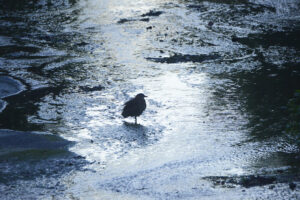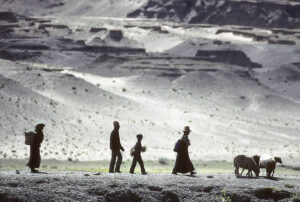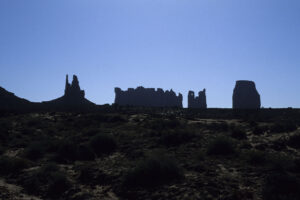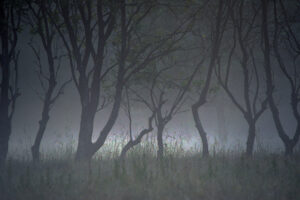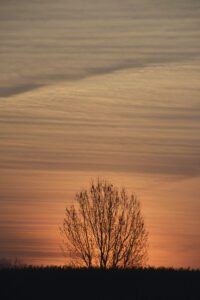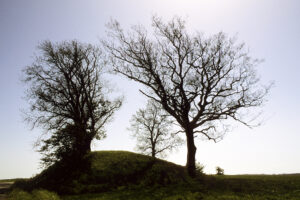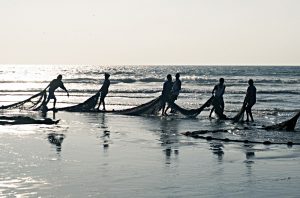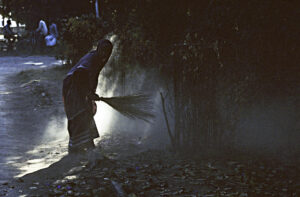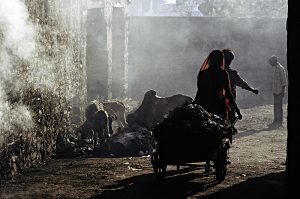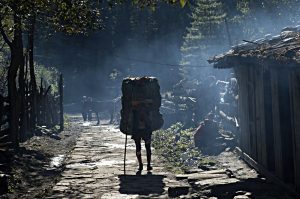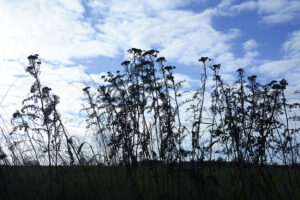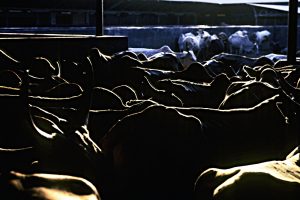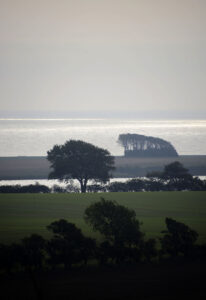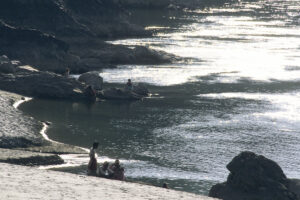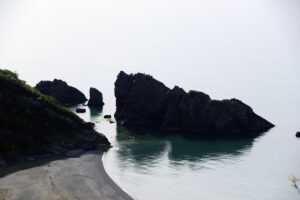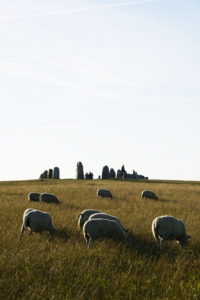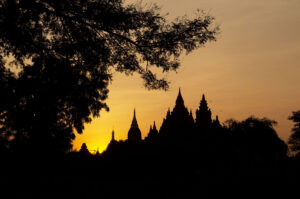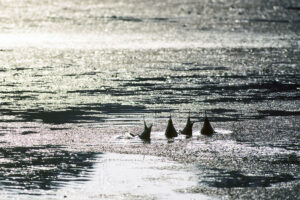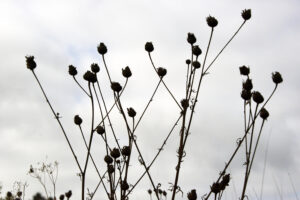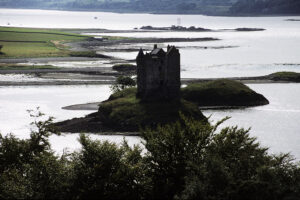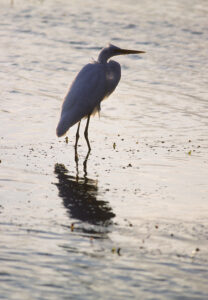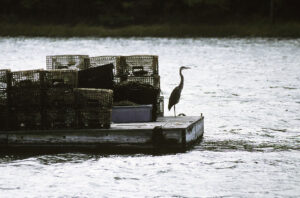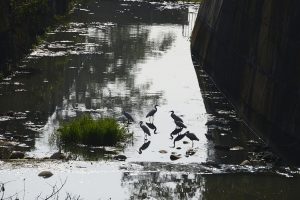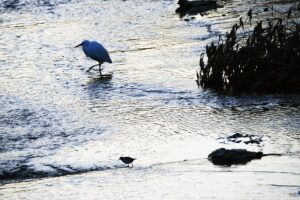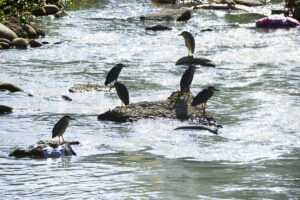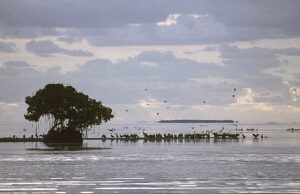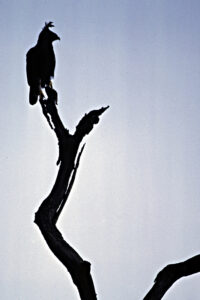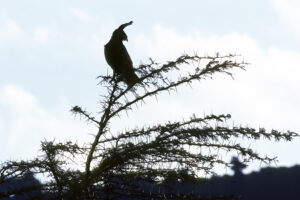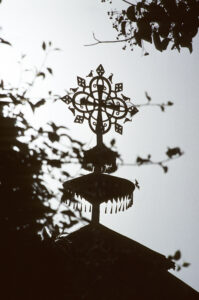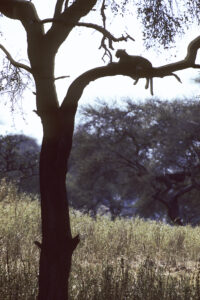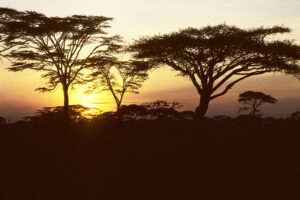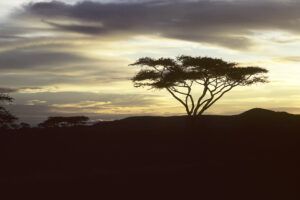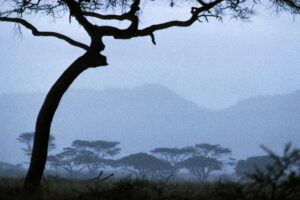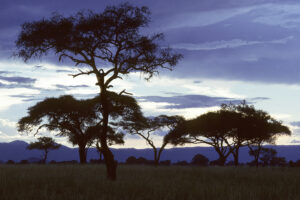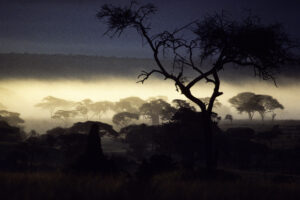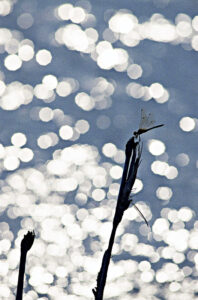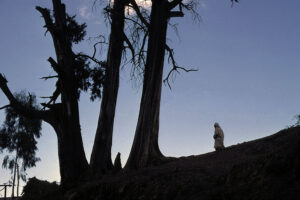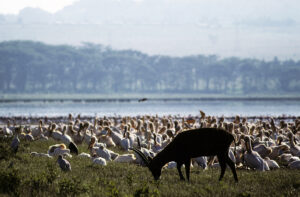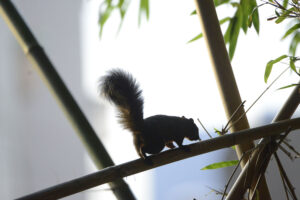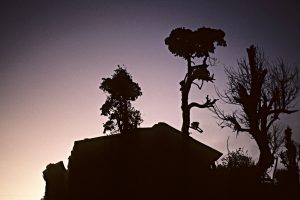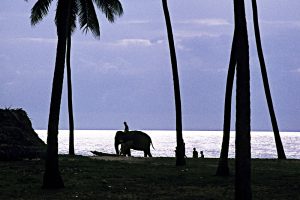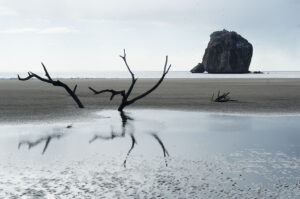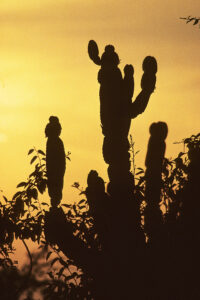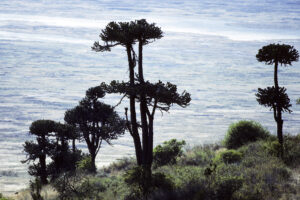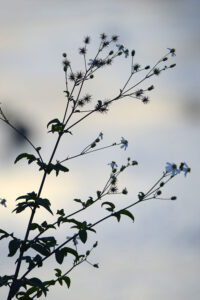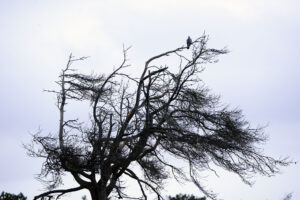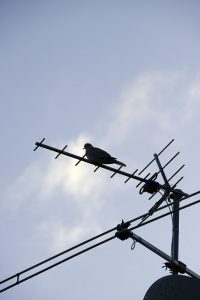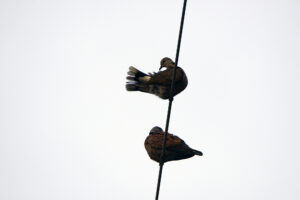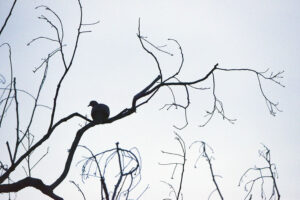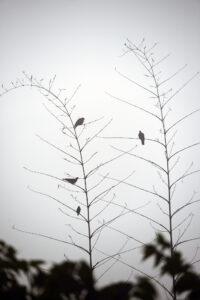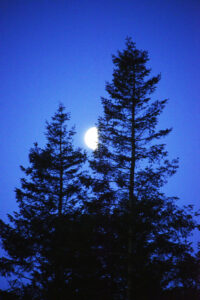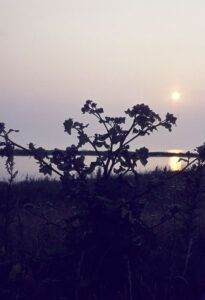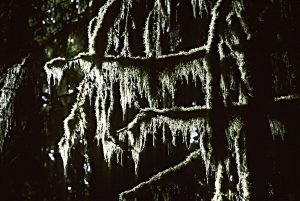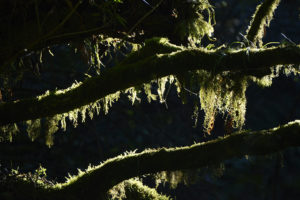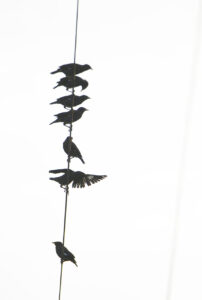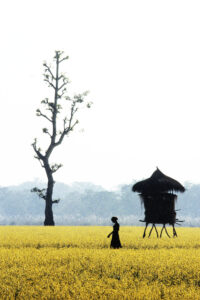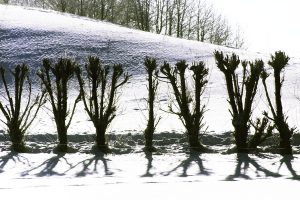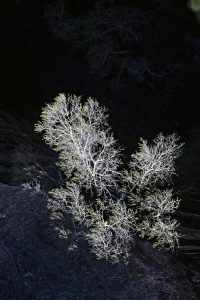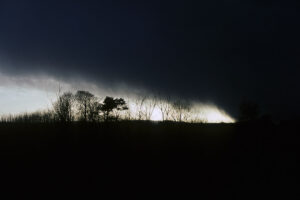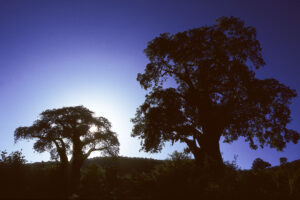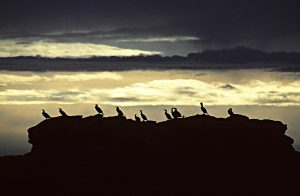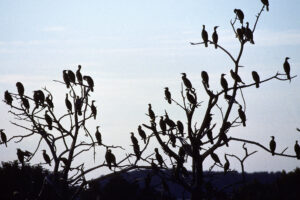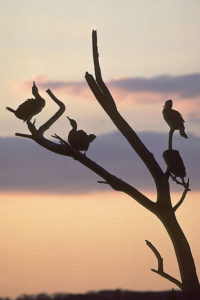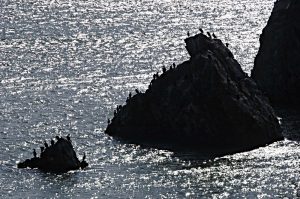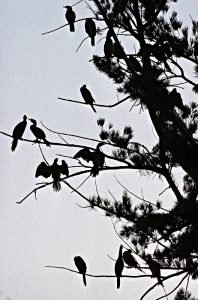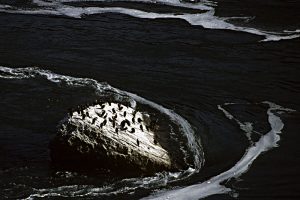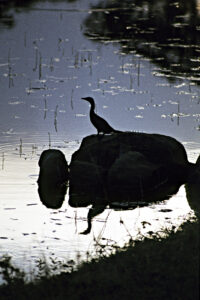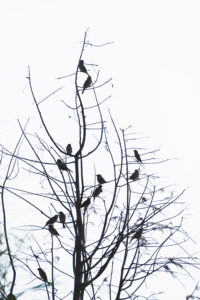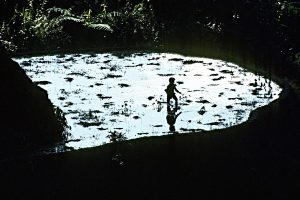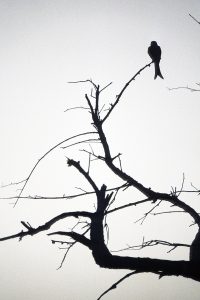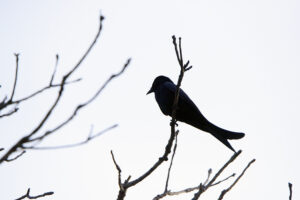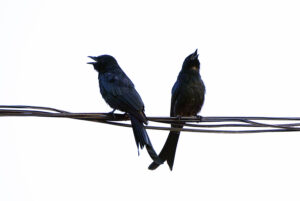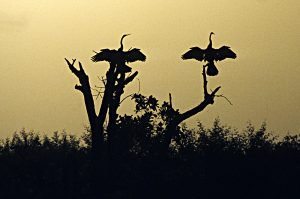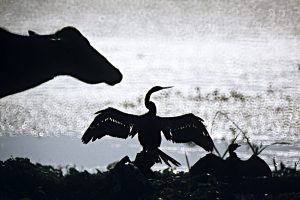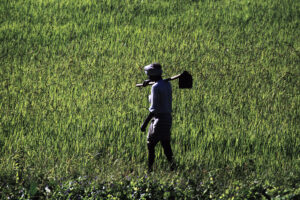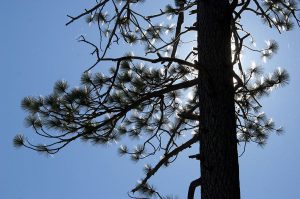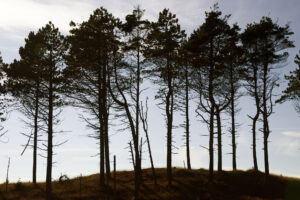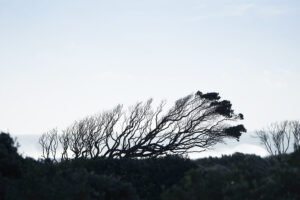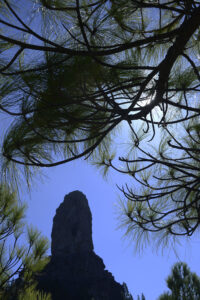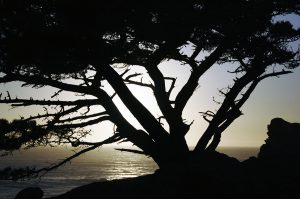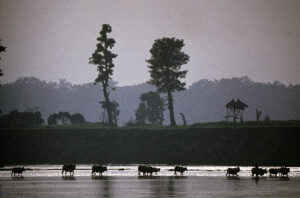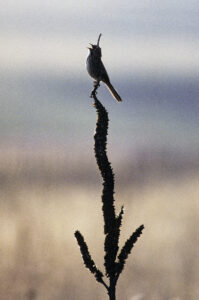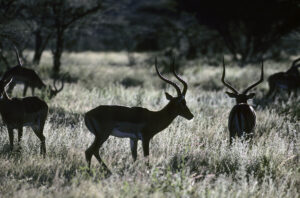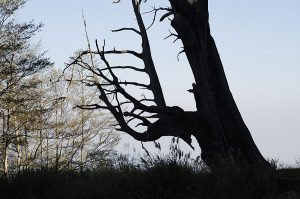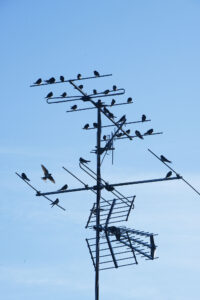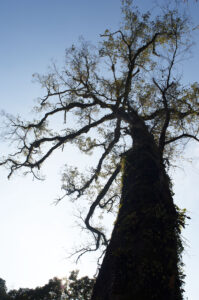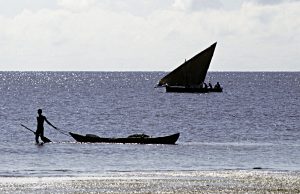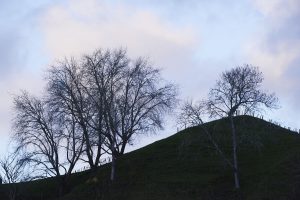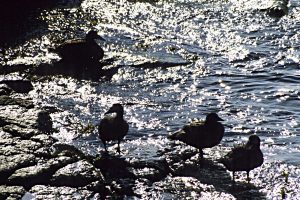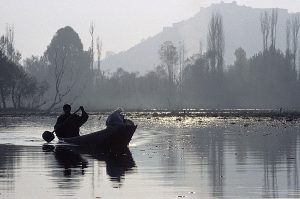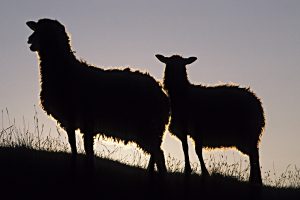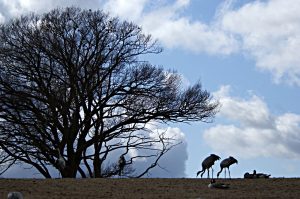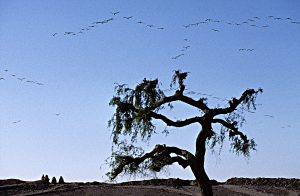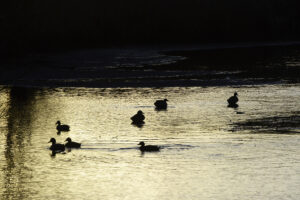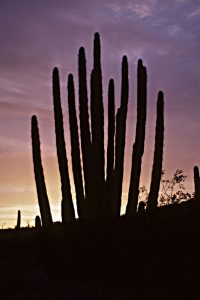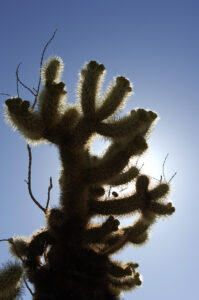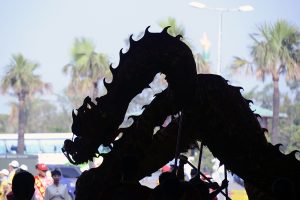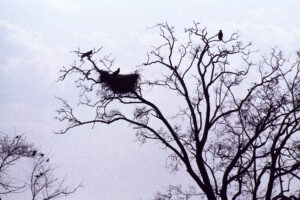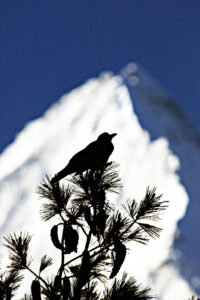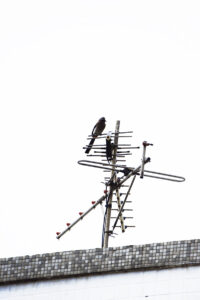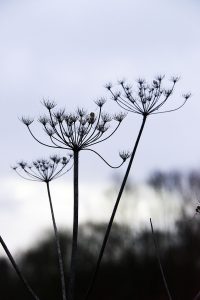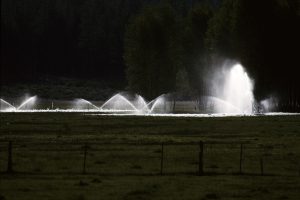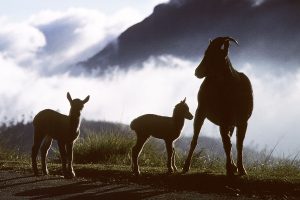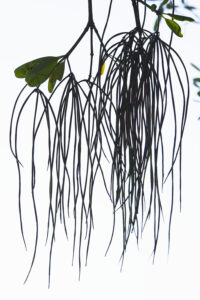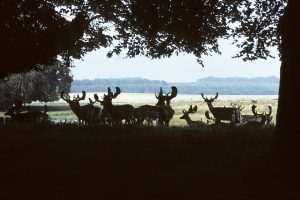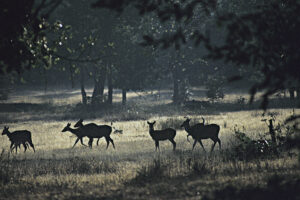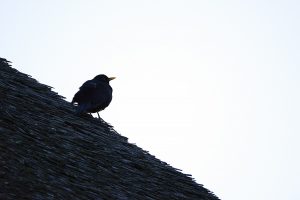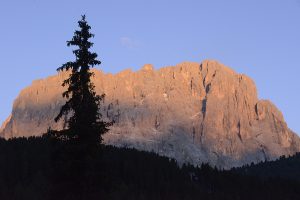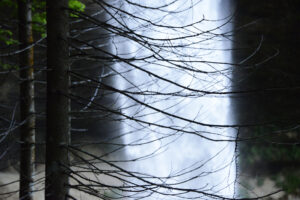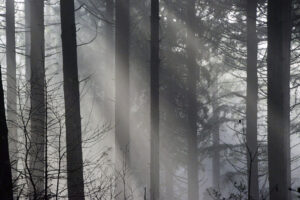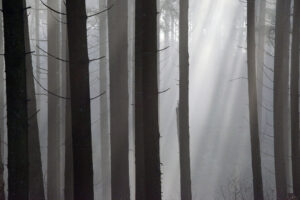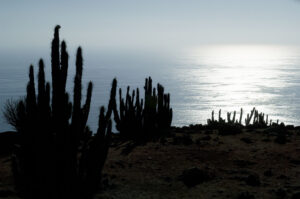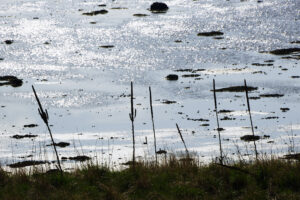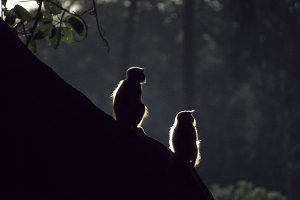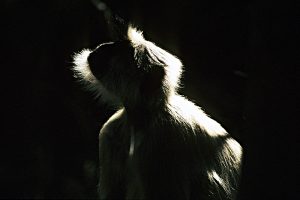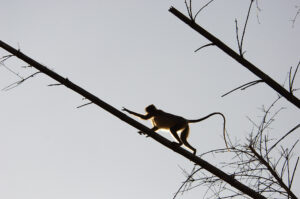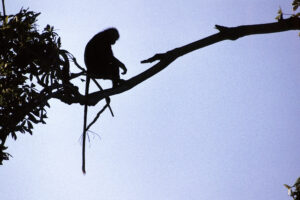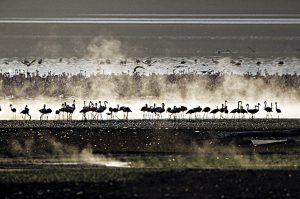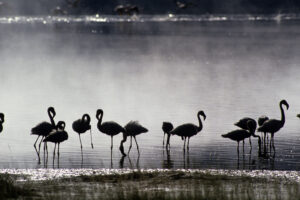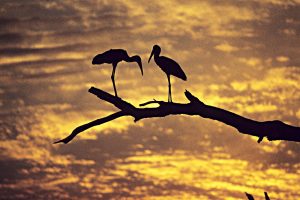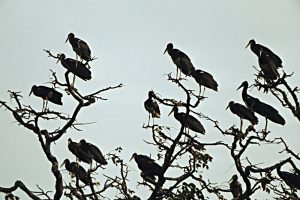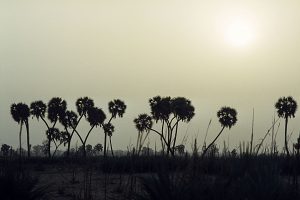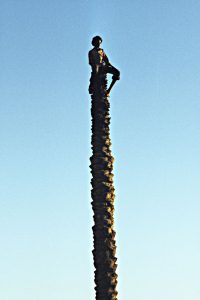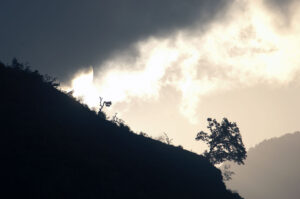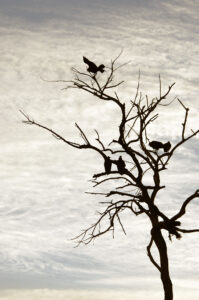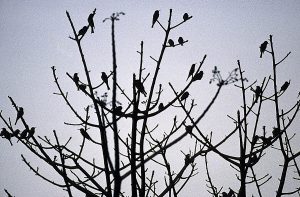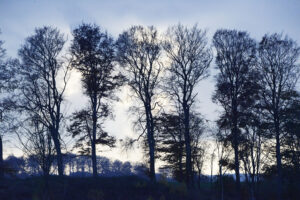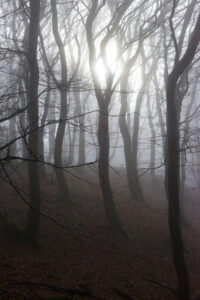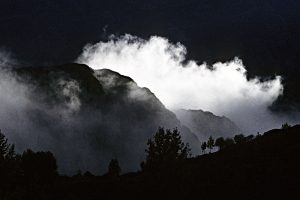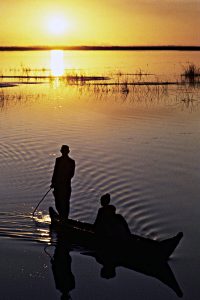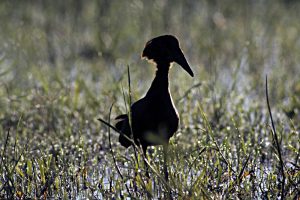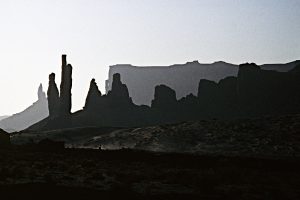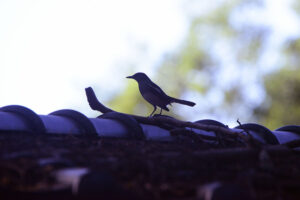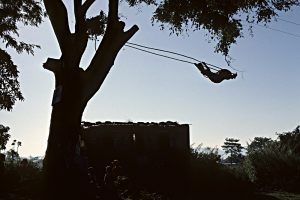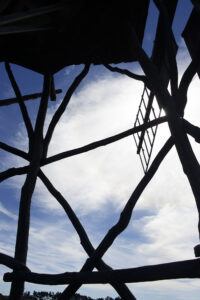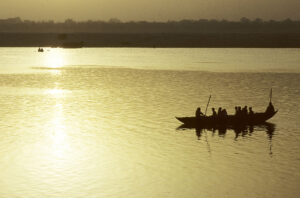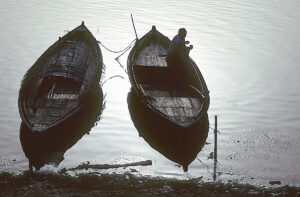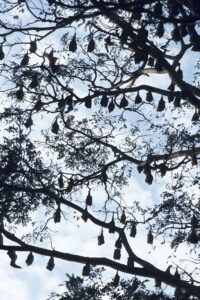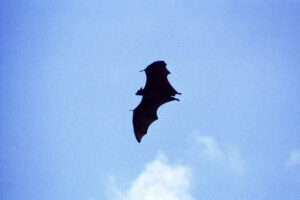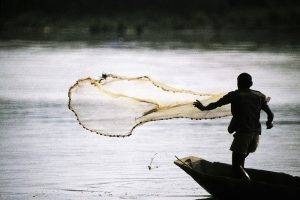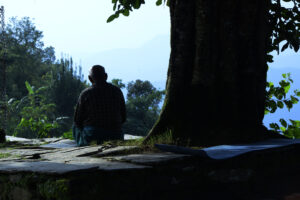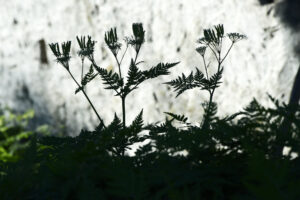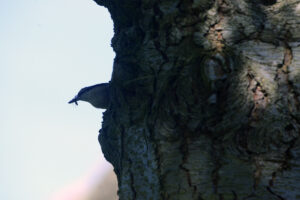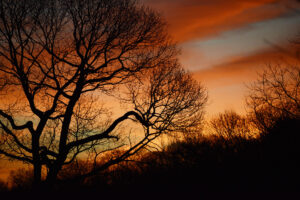Silhouettes
Young men, exercizing early in the morning, Bandipur, Nepal. (Photo copyright © by Kaj Halberg)
Malayan night-heron (Gorsachius melanolophus) in a drainage canal, Taichung, Taiwan. This species is described on the page Animals – Birds: Birds in Taiwan. (Photo copyright © by Kaj Halberg)
People and sheep on their way home to Shigatse, Tibet, stand out strongly against the bleak desert mountains around the city. (Photo copyright © by Kaj Halberg)
Morning mist along a road, Bagan, Myanmar. (Photo copyright © by Kaj Halberg)
In the wonderful Monterey Aquarium, California, huge aquariums, containing various jellyfish, are brightly illuminated. This picture shows Pacific sea nettle (Chrysaora fuscescens). (Photo copyright © by Kaj Halberg)
Evening atmosphere with clouds and lava formations, Aðaldal Valley, northern Iceland. (Photo copyright © by Kaj Halberg)
In Monument Valley, Arizona, rainfall and wind have eroded rocks into bizarre forms.
Silhouetted rocks in Monument Valley, from left: King-on-his-Throne, Stagecoach, Bear-and-Rabbit, and Castle Butte. (Photo copyright © by Kaj Halberg)
The great black-backed gull (Larus marinus) is the largest gull in the world, to 79 cm long, and with a wingspan up to 1.7 m. This very aggressive hunter, pirate, and scavenger is breeding in extreme north-western Russia, coastal Scandinavia, along the Baltic Sea coasts, north-western France, the United Kingdom, Ireland, the North Atlantic, southern Greenland, and along the Atlantic coast of Canada and the United States, southwards to North Carolina.
The specific name is Latin, meaning ‘marine’, derived from mare (‘sea’).
Great black-backed gull, resting on a sailboat, Mill Neck Creek, Long Island, New York. (Photo copyright © by Kaj Halberg)
Swedish whitebeam (Sorbus intermedia) is a smallish tree, growing to about 15 m tall. It is a natural hybrid with genes from rowan (S. aucuparia), wild service tree (S. torminalis), and possibly common whitebeam (S. aria). It is most common in southern Sweden (hence its common name), and also occurs on scattered locations in Estonia, Latvia, the Danish island of Bornholm, south-western Finland, and northern Poland. It is often planted elsewhere, especially along roads.
Other pictures, depicting this species, are shown on the page Plants: Ancient and huge trees.
Morning mist blurs the outline of these planted Swedish whitebeams, Jutland, Denmark. (Photo copyright © by Kaj Halberg)
Tourists, walking along the hot springs at Námaskarð, near Myvatn, Iceland. (Photo copyright © by Kaj Halberg)
Clouds, poplar, and kestrel (Falco tinnunculus) at dawn, Funen, Denmark. (Photo copyright © by Kaj Halberg)
Misty mountains, Mei Shan (‘Plum Mountains’), Guizhou Province, China. (Photo copyright © by Kaj Halberg)
Evening atmosphere at Roskilde Fjord, Zealand, Denmark. In the distance, greylag geese (Anser anser) are flying to their night roost. (Photo copyright © by Kaj Halberg)
Every year in November, thousands of Hindu pilgrims undertake a pilgrimage to the Gandak River at Sonpur, Bihar, northern India. In connection with this festival, a huge market, or mela, is held.
Pilgrims at dawn, Gandak River, Sonpur. (Photo copyright © by Kaj Halberg)
Wet roofs and copper spire, glistening after snowy weather, Copenhagen, Denmark. (Photo copyright © by Kaj Halberg)
An evening stroll on the beach, Border State Park, south of San Diego, California. (Photo copyright © by Kaj Halberg)
Most willows spread their seeds in late summer, but the bay willow (Salix pentandra) does so late in the autumn, and some fruits may even remain on the tree in winter.
This smallish tree, growing to 15 m tall, is native to the boreal zone of Eurasia, far into Siberia. It has become naturalized elsewhere, including North America. The specific name is derived from the Greek pente (‘five’), referring to the male flowers, which have five stamens. The common name refers to the glossy, dark green leaves, which resemble those bay laurel (Laurus nobilis).
Fruit clusters of bay willow in winter, Jutland, Denmark. (Photo copyright © by Kaj Halberg)
Dusk at the beach, Mumbai, India. (Photo copyright © by Kaj Halberg)
Bronze Age burial mound at dusk, near Ibsker, Bornholm, Denmark. (Photo copyright © by Kaj Halberg)
The specific name of the white-fronted goose (Anser albifrons) is from the Latin albus (‘white’) and frons (‘forehead’), like the common name referring to the white feathers at the base of its bill. The salt-and-pepper markings on the breast of adult birds are distinctive of this species as well. These markings have given rise to a popular American name, specklebelly.
The white-fronted goose is divided into five subspecies, breeding along the entire northern Siberian coastal areas, in Alaska and northern Canada, and western Greenland. The wintering areas include northern Ireland, northern Scotland, Holland, northern Germany, Hungary, the northern Black Sea coast, Iraq, the southern coast of the Caspian Sea, Japan, Korea, south-eastern China, southern United States, and northern Mexico.
White-fronted geese, grazing in a field, Lauwersmeer, Netherlands. In the background a windmill and grazing sheep. (Photo copyright © by Kaj Halberg)
Navigation marker in evening light, Fanø, Denmark. (Photo copyright © by Kaj Halberg)
Fishermen, hauling huge nets ashore from the sea, is a very photogenic motive, which may still be encountered in various countries. Three examples are shown below.
Many pictures, depicting fishing and fishermen, are shown on the page Fishing.
Early in the morning, fishermen are hauling a huge net ashore, Bali, Indonesia. (Photo copyright © by Kaj Halberg)
Fishermen, hauling a huge net ashore, Hambantota, Sri Lanka. (Photo copyright © by Kaj Halberg)
These fishermen are rinsing a huge net in the sea, Colva Beach, Goa, India. (Photos copyright © by Kaj Halberg)
Udaipur is a delightful city in southern Rajasthan, India, situated around the gorgeous Pichola Lake. As early as the 10th Century, the Hindu Mewar Rajputs established a town here, named Ayad, which became a thriving trading centre.
Udaipur was founded in 1559 during the reign of Maharana Udai Singh II, the ruler of Chittorgarh, further north. Chittorgarh, situated in a flat tableland, was vulnerable to attacks from the Maharana’s enemies, notably Muslims, who had conquered parts of northern India.
Following the emergence of artillery warfare in the 16th century, Udai Singh decided to move his capital to a more secure location, choosing Ayad. However, as Ayad was prone to flooding, he decided to establish his new capital on a ridge east of the Pichola Lake. To protect the new city from attacks, Udai Singh ordered a 6-km-long wall, with seven gates, to be built around the city.
Early in the morning, this woman in Udaipur is sweeping the street. (Photo copyright © by Kaj Halberg)
This picture shows two types of renovation in Udaipur: A female garbage collector, and zebu oxen, eating garbage. The zebu is described on the page Animals: Animals as servants of Man. (Photo copyright © by Kaj Halberg)
This heavily loaded porter is passing through smoke, which seeps out from a house, where morning cooking is taking place, Marsyangdi Valley, Annapurna, Nepal. (Photo copyright © by Kaj Halberg)
Tree with doves, outlined against the setting sun, Keoladeo National Park, Rajasthan, India. (Photo copyright © by Kaj Halberg)
Tansy (Tanacetum vulgare) is a composite, which is widely distributed in Eurasia, from England and Spain eastwards to the Pacific, and from subarctic areas southwards to the Mediterranean, Turkey, Tibet, and Japan. In former times, it was much utilized in folk medicine, but today it is mainly used for dyeing. The common name was adapted from Old French tanesie, which came from the Latin tanacetum, which was again adapted from Ancient Greek athanatos (‘immortal’), probably referring to its persistence.
Tansy is very common in Denmark, growing along roads and trails, in this case in eastern Funen. (Photo copyright © by Kaj Halberg)
The last sun rays of the day illuminate cattle, gathered in a dairy farm, southern Tanzania. The taming of wild oxen is described on the page Animals: Animals as servants of Man. (Photo copyright © by Kaj Halberg)
Buddhist stupas, chortens, and pagodas are all structures, whose various parts symbolize the elements, the base representing soil, the dome water, the rings or squares above the dome fire, the half-moon air, and the uppermost point space, sometimes depicted as a small sun.
Chortens are the Tibetan variety of stupas. Early in the morning, this chorten stands out against the barren hills surrounding Tso Kar, a saline lake in Ladakh, India. (Photo copyright © by Kaj Halberg)
Islands off the Aegean Coast at Fethiye, Turkey. (Photo copyright © by Kaj Halberg)
Morning walk along Crescent Beach, California. (Photo copyright © by Kaj Halberg)
Beach life, Cartagena, Chile. (Photo copyright © by Kaj Halberg)
Fields and hedges, near Cathair Mhor, Ireland (top), and Langeland, Funen, Denmark. (Photos copyright © by Kaj Halberg)
Annual honesty (Lunaria annua) is a plant of the cabbage family (Brassicaceae), whose flat, circular fruits (siliculas) have given rise to the generic name, which means ‘moon-like’. The two halves of the silicula are divided by a shining membrane, which remains on the plant for a long time, after the seeds have fallen off.
Fruits of annual honesty, Møn, Denmark. (Photo copyright © by Kaj Halberg)
Sunlight is reflected in the Ganges River, where small groups of people gather to enjoy a bath and a quiet moment, Rishikesh, Uttarakhand, northern India. (Photo copyright © by Kaj Halberg)
Coastal rocks, Denizkonak, near Cide, Black Sea, Turkey. (Photo copyright © by Kaj Halberg)
Ales Stenar, near the village of Kåseberga, Skåne, Sweden, is a megalithic structure from the Bronze Age, consisting of c. 60 stones, erected to form the outline of a ship, c. 80 m long and 20 m wide. (Photos copyright © by Kaj Halberg)
Pagodas, Bagan, Myanmar, in morning mist (top), and at sunset. (Photos copyright © by Kaj Halberg)
The pagoda style of Nepal, which is inspired by the shape of the Himalayan fir tree (Abies spectabilis), is the oldest pagoda style in Asia. These architectural beauties are multi-tiered Hindu temples with multiple curved roofs.
Morning fog envelops pagodas on Durbar Square, Bhaktapur, Nepal. The population of this ancient city are mainly Newars, a people of mixed Mongolian and Indo-European descent. (Photo copyright © by Kaj Halberg)
Sunset behind pagodas on Durbar Square, Kathmandu. (Photo copyright © by Kaj Halberg)
On a foggy morning, the sun is rising behind a small pagoda at the Pashupatinath Temple, Kathmandu. (Photo copyright © by Kaj Halberg)
Avoiding the harshest areas of the Arctic, the handsome northern pintail (Anas acuta) breeds across the northern hemisphere, from Iceland, Norway, and Denmark eastwards to the Pacific, and also from Alaska and Canada southwards to central United States. It is a scarce breeding bird in central and eastern Europe, and in Turkey.
The winter months are spent in the southern half of North America, in Central America and the Caribbean, in the major part of Europe and the Middle East, in northern and eastern Africa, and in the Indian Subcontinent, Indochina, southern China, Taiwan, and the northern Philippines.
Silhouettes of feeding northern pintails, Ranthambhor National Park, Rajasthan, India. (Photo copyright © by Kaj Halberg)
Greater knapweed (Centaurea scabiosa) thrives in drier grasslands, along roads, and in fallow fields, preferably on calcareous soils. It is distributed in almost all of Europe and thence eastwards across the major part of Siberia to Central Asia. It is described in depth on the page Plants: Flora of the Alps and the Pyrenees.
The specific name refers to an old belief that the leaves of this plant could treat scabies.
Fruiting greater knapweed at dawn, Funen, Denmark. (Photo copyright © by Kaj Halberg)
Stalker Castle, in Gaelic named Caisteal an Stalcaire, is a small castle, four storeys high, situated on an islet in the inlet Loch Laich, north-east of Port Appin, Argyll, Scotland. In the Gaelic, stalcaire means ‘hunter’ or ‘falconer’.
The original castle was a small fort, built around 1320 by Clan MacDougall, but it is believed that Clan Stewart of Appin erected the castle in its present form around the 1440s. Following some drunken bet, it was passed on to Clan Campbell around 1620. In 1908, it was bought by Charles Stewart of Achara, who carried out basic conservation work. In 1965 Lt. Col. D.R. Stewart Allward acquired the castle and fully restored it. The castle is open to the public at selected times during the summer. (Source: CastleStalker.com)
Stalker Castle, Scotland. (Photo copyright © by Kaj Halberg)
The great white egret (Ardea alba) is a large heron with an almost global distribution, found in Europe, Africa, most of Asia, Australia, and the Americas. Traditionally, it was placed in the genus Egretta (below), mainly due to its white plumage. Some authorities have also placed it in a separate genus, Casmerodius. However, it shows many affinities to large herons in the genus Ardea.
Other pictures, depicting the great white egret, are shown on the pages Animals – Birds: Birds in Taiwan, and Birds in the United States and Canada.
Great white egret in evening light, Salinas Cabo Rojo, Puerto Rico. (Photo copyright © by Kaj Halberg)
The great blue heron (Ardea herodias) is the largest heron in America – in fact the world’s third-largest heron, only surpassed by goliath heron (A. goliath) and white-bellied heron (A. insignis). It is a common bird, breeding from central Canada southwards to Central America and the Caribbean, with a separate population in the Galápagos Islands. The northernmost populations are migratory, spending the winter as far south as northern South America. Some birds in southern Florida and the Caribbean are pure white, and it is still discussed whether they form a separate species.
Other pictures, depicting the great blue heron, are shown on the page Animals – Birds: Birds in the United States and Canada.
Great blue heron, resting on a pontoon with lobster traps, Mill Neck Creek, Long Island, New York. (Photo copyright © by Kaj Halberg)
The little egret (Egretta garzetta) is distributed in most tropical and subtropical areas of Europe, Africa, Asia, and Australia. In 1994, a small population was established on the Caribbean island Barbados, and the species has since spread to other Caribbean islands and to the Atlantic coast of the United States. The generic name is derived from Provençal French aigrette, a diminutive of aigron (‘heron’), whereas the specific name is the Italian name for this bird.
Little egret is common in Taiwan. In this picture, a flock is feeding in a drainage canal in the city of Taichung. (Photo copyright © by Kaj Halberg)
Early in the morning, this little egret is also feeding in a drainage canal in Taichung. The small bird in front is a common sandpiper (Actitis hypoleucos), described on the page Animals – Birds: Birds in Taiwan. (Photo copyright © by Kaj Halberg)
The smallish black-crowned night-heron (Nycticorax nycticorax) is common, found in most warmer parts of the world.
The generic and specific names are derived from Ancient Greek nyktos (‘night’) and korax (‘raven’), referring to the mainly nocturnal feeding habits of this bird, and to its hoarse, raven-like call.
It figures in Japanese classical folklore, where it is called Goi-sagi, from goi (‘fifth rank’) and sagi (‘heron’). According to legend, the all-powerful Emperor Daigo (reigned 897-930 A.D.) ordered a vassal to capture a black-crowned night-heron. Upon hearing the imperial command, the heron submitted itself to capture. The emperor was pleased that the heron had confirmed his omnipotence over nature as well as man, whereupon he granted it the title ‘king of the herons’ and the position of fifth rank in his court, and released it unharmed. (Source: Jobling, 2010)
Night-herons in a drainage canal, Taichung, Taiwan. (Photo copyright © by Kaj Halberg)
Rhizophora is a genus of 7 species of mangrove trees, which are adapted to live along tropical coasts that are inundated daily by seawater. They are characterized by ‘stilt roots’, aerial roots that carry the plant above the surface and are able to respire oxygen, even when the lower roots are submerged. These trees also possess a mechanism, which removes excess salts from their cells.
The generic name is derived from the Greek rhiza (‘root’) and phoros (‘bearing’), referring to the aerial roots.
The red mangrove (Rhizophora mangle) is widespread, found along coasts of southern North America, Central America, and northern South America, on islands in the Pacific, and along tropical coasts of West Africa.
Birds resting near a red mangrove tree: American white pelican (Pelecanus erythrorhynchos), double-crested cormorant (Nannopterum auritum), laughing gull (Leucophaeus atricilla), and black skimmer (Rynchops niger), Everglades National Park, Florida. (Photo copyright © by Kaj Halberg)
The long-crested eagle (Lophaetus occipitalis) is a fairly common, medium-sized eagle, distributed in sub-Saharan Africa, from Senegal eastwards to Ethiopia, and thence southwards to South Africa and Namibia. It mainly lives at forest edges and in moist woodlands, but may be observed in many types of open land, including grasslands, marshes, farmland, and plantations, from sea level up to about 2,000 m, occasionally higher.
Long-crested eagle, perched on a dead tree, Lake Manyara National Park, Tanzania. (Photo copyright © by Kaj Halberg)
This long-crested eagle is resting in an acacia, Ngorongoro Crater, Tanzania. (Photo copyright © by Kaj Halberg)
The predominant religion in Ethiopia is an ancient, orthodox form of Christianity, the Ethiopian Tewahedo Church, described on the pages Religion: Christianity, and Travel episodes – Ethiopia 1996: Timkat – a Christian festival.
Cross on the Church of Debre Mariam, situated on an islet in Lake Tana, Ethiopia. (Photo copyright © by Kaj Halberg)
Leopard (Panthera pardus), resting in an acacia, Tarangire National Park, Tanzania. This magnificent cat is described in depth on the page Animals – Mammals: The spotted killer. (Photo copyright © by Kaj Halberg)
Sunrise behind the former Maharaja’s palace, Mysore, Karnataka, India. (Photo copyright © by Kaj Halberg)
The umbrella acacia (Vachellia tortilis), previously known as Acacia tortilis, was named due to the shape of the crown, which is often broad and curved like an umbrella. It is a very widespread and common tree, to 20 m tall, distributed in the entire northern Africa, southwards to Senegal and Chad, and in a broad belt from Egypt southwards through eastern Africa to South Africa and southern Namibia. It also occurs in the Middle East, from Syria southwards through the entire Arabian Peninsula.
Previously, it was thought that 4 acacia species occurred in this vast area, but research has shown that they are all subspecies of V. tortilis. (Source: fao.org/3/Q2934E)
Other species of acacia are described on the page In praise of the colour yellow.
Marabou storks (Leptoptilos crumenifer), resting in umbrella acacias, Serengeti National Park, Tanzania. (Photo copyright © by Kaj Halberg)
Umbrella acacias at dawn, Serengeti National Park. (Photo copyright © by Kaj Halberg)
A lone umbrella acacia at dusk, Serengeti National Park. (Photo copyright © by Kaj Halberg)
Rainy weather on a savanna with umbrella acacias, Serengeti National Park. (Photo copyright © by Kaj Halberg)
Umbrella acacias and clouds at dusk, Tarangire National Park, Tanzania. (Photo copyright © by Kaj Halberg)
Fog lifting on a savanna with umbrella acacias, Tarangire National Park. The fat tree is a baobab (Adansonia digitata), described elsewhere on this page. (Photo copyright © by Kaj Halberg)
The Jama Mashid (’The Friday Mosque’) in Delhi is the largest mosque in India, built 1651-1656 during the reign of Moghul emperor Shah Jahan (1592-1666). On Fridays, prayer takes place on the 99-metre-wide main square, which is able to hold 25,000 people. The mosque contains two minarets, both 39 m high.
Other pictures, depicting Jama Mashid, are shown on the page Religion: Islam.
Jama Mashid, Old Delhi, India. The birds are feral doves (Columba livia), described elsewhere on this page. (Photo copyright © by Kaj Halberg)
Dragonfly, silhouetted against reflections in the Rapti River, southern Nepal. (Photo copyright © by Kaj Halberg)
Early in the morning, a man passes by tall eucalyptus trees, growing at the outskirts of Lalibela, Ethiopia. (Photo copyright © by Kaj Halberg)
The Joshua tree (Yucca brevifolia) is a large species of yucca, characterized by its many branches. It is a typical plant of the Mojave Desert in south-western United States. Its popular name stems from Californian Mormons, who encountered this plant on their way to settle with their fellow soul mates in Utah. The outstretched ‘arms’ of this tree reminded them of Joshua, who was guiding the Children of Israel to the Land of Canaan.
Other pictures, depicting this species, are shown on the page Plants: Plants of Sierra Nevada.
Joshua tree at dusk, Joshua Tree National Park, California. (Photo copyright © by Kaj Halberg)
The waterbuck (Kobus ellipsiprymnus) is a large, greyish antelope with long, coarse pelt on the neck. It is distributed across much of sub-Saharan Africa, in the Sahel zone from Senegal eastwards to southern Sudan and western Ethiopia, and thence southwards through eastern Africa to north-eastern South Africa. There are also scattered populations in Angola, Gabon, and Congo Brazzaville.
Many subspecies have been described, divided into two main groups. Members of the ellipsiprymnus group have an elliptic white marking on the rump, which gave rise to the specific name, from the Greek ellipes (‘ellipse’) and prymnos (‘rump’). The other group is defassa, whose members have a white patch on the rump. Initially, the latter was described in 1835 by German naturalist Wilhelm Eduard Rüppell (1794-1884) as a separate species, which he named Antilope defassa, from its Amharic name. Today, however, most taxonomists regard the two groups as a single species, as they interbreed, where their ranges overlap.
Subspecies, which belong to ellipsiprymnus, are found from eastern Kenya and Tanzania southwards to north-eastern South Africa, whereas the defassa subspecies occupy the remaining distribution area.
Male defassa waterbuck, grazing in front of white pelicans (Pelecanus onocrotalus) and a few yellow-billed storks (Mycteria ibis), Lake Nakuru, Kenya. These birds are described on the page Animals – Birds: Birds in Africa. (Photo copyright © by Kaj Halberg)
Ferns on a stunted tree, Langtang Valley, Nepal. (Photo copyright © by Kaj Halberg)
Ivys (Hedera) are a genus of 12-15 species of evergreen woody climbers in the ginseng family (Araliaceae), native from the major part of Europe, Turkey, and the Caucasus eastwards to the Himalaya, China, Taiwan, and Japan, and also in North Africa, the Canary Islands, and Madeira. Several species have become invasive, especially in North America and Australia.
The generic name is the classical Latin name of the common, or English, ivy (Hedera helix), which is distributed in most of Europe and western Asia. The specific name is Greek, meaning ‘twisted’ or ‘spiralled’, which of course refers to its climbing habit. The common name ivy is from Old English ifig, from the German Efeu, which is of unknown origin.
Trees, covered in common ivy, Cionn Átha Gad (Kinnegad), Ireland. (Photo copyright © by Kaj Halberg)
Evening sky, Bandipur, Nepal. (Photo copyright © by Kaj Halberg)
As its name implies, the Taiwan squirrel is endemic to Taiwan. It is a subspecies, taiwanensis, of the widespread red-bellied squirrel (Callosciurus erythraeus), which is distributed from eastern Nepal, Bhutan, and north-eastern India eastwards across Indochina to southern China and Taiwan, and also in Malaysia.
Numerous other squirrel species are described on the page Animals – Mammals: Squirrels.
Taiwan squirrel is ubiquitous in the lowlands of Taiwan. This one was observed in a bamboo growth in the city of Taichung. (Photo copyright © by Kaj Halberg)
Oaks are a large genus, Quercus, comprising 300-500 species, depending on authority. These trees are native to the Northern Hemisphere, distributed in the Americas, Asia, Europe, and North Africa.
The generic name Quercus probably stems from the name of the Lithuanian god of thunder, Perkunas. The word oak is from the Anglo-Saxon ek, in ancient Germanic aik, of uncertain origin and meaning.
Various species of oak are described on several pages on this website, see Plants: Plants in the Himalaya 2, Plants: Plants in Sierra Nevada, and Plants: Ancient and huge trees.
The common oak (Quercus robur), also known as English oak or pedunculate oak, is native to the major part of Europe, eastwards through Turkey to the Caucasus and northern Iran.
One of the trunks of this old common oak has broken off, Suserup Skov, Zealand, Denmark. (Photo copyright © by Kaj Halberg)
Quercus semecarpifolia is often called spiny-leaved oak, although only younger trees have spines on the leaves. It is described in depth on the page Plants: Plants in the Himalaya 2. It is very common from Afghanistan eastwards to Nepal and extreme southern Tibet, found at altitudes between 1,700 and 4,000 m.
House and spiny-leaved oaks at dawn, Ghorepani, Annapurna, Nepal. The stunted appearance of one of the trees is caused by people, lopping branches and foliage for fodder. (Photo copyright © by Kaj Halberg)
Lake Mono, eastern California, is characterized by hundreds of whitish rock spires, so-called tufas. Over thousands of years, these rocks were formed from deposited calcium carbonate below the water surface. However, as this lake constitutes a major source of drinking water for the huge population of coastal California, the water level has shrunk, revealing the tufas.
The tiny dots in this picture, taken early in the morning, are black-necked grebes (Podiceps nigricollis). In autumn, as many as 1.8 million visit this lake, making it the most important staging location for this species in America. It is described on the page Animals – Birds: Birds in the United States and Canada. (Photo copyright © by Kaj Halberg)
The Asian elephant (Elephas maximus) was first tamed in the Indus Valley about 5,500 years ago. The sad fate of elephants is described on the page Animals – Mammals: Rise and fall of the mighty elephants.
Asian elephant and coconut palms (Cocos nucifera) on a beach near Negombo, Sri Lanka. (Photo copyright © by Kaj Halberg)
This elephant in Yala National Park, Sri Lanka, was blocking the road for quite some time. (Photo copyright © by Kaj Halberg)
Peña Bruja (‘Witch’s Rock’) is a huge off-shore rock in Santa Rosa National Park, Guanacaste, Costa Rica.
According to legend, a local man, defying the strong waves around the rock, managed to climb it. Here, he met three beautiful young women, who were under a spell, each of them with a guardian: a bull, an old man, and a dog. The man agreed to return to rescue them, but they made him promise not to tell others about their misfortune. However, the local inhabitants managed to get the story out of him, which meant that the spell could not be broken. Nobody ever saw the young women again, and, as the story goes, when the sea becomes rough, the bellowing of the enraged bull can be heard within the rock.
Silhouettes of Peña Bruja and a dead tree. (Photo copyright © by Kaj Halberg)
Euphorbia candelabrum is a succulent, tree-like species of spurge, usually around 10 m tall, but occasionally to 20 m. It is endemic to eastern Africa along the Great Rift Valley, and to the countries around the African Horn. The specific name alludes to its shape, which resembles a candelabrum, giving rise to the popular name candelabra tree. It grows in dry wooded grasslands and on rocky slopes.
Sunset behind Euphorbia candelabrum, Queen Elizabeth National Park, Uganda. (Photo copyright © by Kaj Halberg)
A close relative, also known as candelabra tree, is Euphorbia bussei var. kibwezensis, which is distributed in southern Kenya and northern Tanzania, where it grows on rocky slopes and in open deciduous woodland, at elevations between 350 and 2,000 m. This plant grows to 10 m tall, sometimes to 15 m, having a bole up to 30 cm across. The branches are green and 4-angled, with short spines on the margins.
Euphorbia bussei var. kibwezensis, Ngorongoro Crater, Tanzania. (Photo copyright © by Kaj Halberg)
The roof of a greenhouse, Xitun Botanical Garden, Taichung, Taiwan. (Photo copyright © by Kaj Halberg)
Downy bur-marigold (Bidens pilosa) is a pan-tropical and -subtropical weed of unknown origin, which has become a pest in numerous places, expelling native species. One isolated plant can produce over 30,000 hooked seeds, which are readily spread by sticking to animals’ furs, socks, trousers, etc.
This species is described in depth on the pages Nature: Invasive species, and Plants: Urban plant life.
In Taiwan, downy bur-marigold is extremely common, often covering huge areas. This specimen was growing in a drainage canal in the city of Taichung. (Photo copyright © by Kaj Halberg)
This little girl in the village of Jagat, Lower Marsyangdi Valley, Annapurna, central Nepal, is sitting down in a doorway to have her meal. (Photo copyright © by Kaj Halberg)
The wood pigeon (Columba palumbus) was once a shy bird, restricted to forests. However, since the 1960s it has adapted to a life in cities, where it is now very common and confiding. It is distributed all over Europe, the Middle East, and Morocco, with isolated populations in Central Asia and the western part of the Himalaya.
Other pictures, depicting the wood pigeon, are shown on the page Animals: Urban animal life.
Wood pigeon in a dead pine tree, Thy, Denmark. (Photo copyright © by Kaj Halberg)
Originally, the native area of the collared dove (Streptopelia decaocto) was the Indian Subcontinent, but during the Middle Ages it spread to the Near East, reaching Istanbul in the 1700s. In the 1820s, it had spread to the Balkans, whereas the expansion of the major part of Europe took place very rapidly, between the 1930s and 1950s. Today, it is common all over Europe, mainly living in urban areas.
The cooing of this bird is a rather monotonous, continuously repeated “cuh-coooor-cuh”, which can at times be rather annoying. When I was young and prepared for high school examinations, it was quite hot, so I had to leave a window open. A favourite cooing place of a collared dove was our neighbour’s flag pole, situated about 15 m from my window. Its cooing got so annoying that I had to go out and chase it away, but five minutes later it was back on the pole. Well, I did pass my exams anyway.
Other pictures, depicting this species, are shown on the page Animals: Urban animal life.
Collared dove, sitting on a TV antenna, Funen, Denmark. The first observation of this species in Denmark was in 1948, and since then it has spread to almost the entire country. (Photo copyright © by Kaj Halberg)
A close relative, the tiny red turtle dove (Streptopelia tranquebarica), is found from the Indian Subcontinent eastwards to the major part of China and Taiwan, and thence southwards to Indochina and northern Philippines.
The female resembles a small collared dove, whereas the male is quite distinct, having grey head, black collar on the hind neck, red wings, and reddish breast, which has given rise to the popular name of the species.
The specific name means ‘from Tranquebar’, a former Danish colony on the east coast of present-day Tamil Nadu, South India. Presumably, the type specimen of this species was collected here. – Tranquebar is described on the page Culture: Entrances.
A number of pictures, depicting the red turtledove, are shown on the pages Animals: Urban animal life, and Animals – Birds: Birds in Taiwan.
Red turtledove, ssp. humilis, is common in the lowlands of Taiwan. In this picture, a pair is resting in a dead tree in the Aogu Wetlands, together with two Taiwan house swallows (Hirundo javanica ssp. namiyei). (Photo copyright © by Kaj Halberg)
Red turtle doves, preening early in the morning, Taichung, Taiwan. (Photo copyright © by Kaj Halberg)
The spotted, or pearl-necked dove (Spilopelia chinensis), is a pretty bird, distinguished by its pearl-like white spots on black background around the neck, forming a semi-collar.
Formerly, it was included in the genus Streptopelia, but studies on vocalization, together with DNA analyses, led to the conclusion, that this species and its near relative, the laughing dove (Spilopelia senegalensis), differed sufficiently from the other Streptopelia species to form a separate genus.
This bird is widely distributed in Asia, from the Indian Subcontinent eastwards to China and Taiwan, thence south through the Philippines and Southeast Asia to Indonesia. The nominate race chinensis is very common in Taiwan, also in cities. The pictures below are all from Taiwan, and other pictures are shown on the pages Animals: Urban animal life, and Animals – Birds: Birds in Taiwan.
Spotted dove at dawn, Taichung. (Photo copyright © by Kaj Halberg)
Spotted doves on dead bamboo stems, Beishan, near Puli. (Photo copyright © by Kaj Halberg)
In a yellowish morning light, a spotted dove and tree sparrows (Passer montanus) are seen as silhouettes in front of a building in Taichung. The tree sparrow is described elsewhere on this page. (Photo copyright © by Kaj Halberg)
In this picture, a spotted dove is sitting on a wire near a high-voltage pylon, Taichung. (Photo copyright © by Kaj Halberg)
This pair is sitting on a lamp in Central Taiwan Science Park, Taichung. (Photo copyright © by Kaj Halberg)
European silver fir (Abies alba) is native to montane areas in Europe, from northern France and southern Germany southwards to the Pyrenees and northern Greece, eastwards to the Carpathians and Bulgaria, occurring at elevations up to 1,700 m. It is commonly grown elsewhere, especially northern Europe and eastern North America. It is a large tree, growing to 50 m tall and with a trunk diameter up to 1.5 m, occasionally to 60 m tall and 3.8 m across.
Crescent moon behind European silver firs, eastern Jutland, Denmark. (Photo copyright © by Kaj Halberg)
The woolly burdock (Arctium tomentosum) is distributed from the major part of Europe eastwards to temperate areas of Asia, as far east as Mongolia and eastern Siberia. It can be told from other burdocks by the spiderweb-like hairs in the inflorescence.
Woolly burdock at sunset, Zealand, Denmark. (Photo copyright © by Kaj Halberg)
Old-man’s-beard lichens (Usnea) constitute a large, worldwide genus of the family Parmeliaceae, comprising about 600 species. Most members are greyish-green, and the major part grow on trees. They are ubiquitous in wetter areas, where they often drape trees, hanging down from twigs and branches, and waving in the wind.
In his book Flora Danica, from 1648, Danish physician and herbalist Simon Paulli (1603-1680) gives this fascinating account of old-man’s-beard lichen: ”But above all other kinds of moss [lichens], which grow in the forests on trees, rocks and other places, the most famous one is Usnea, sev Muscus cranii humani, meaning: ’That moss which grows on human skulls’, which, although rarely, is sometimes found on the skulls of miscreants, who have been beheaded, or otherwise done away with, and whose heads have been placed on a stake.”
These pictures show reverse silhouettes of old man’s beard lichens, illuminated by sunshine, Olympic National Park, Washington, United States (top), and near Wushe, central Taiwan. (Photos copyright © by Kaj Halberg)
Javan mynas (Acridotheres javanicus), resting on a wire, Taichung, Taiwan. This bird is described in depth on the page Animals – Birds: Birds in Taiwan. (Photo copyright © by Kaj Halberg)
Leaf mustard (Brassica juncea), also known as brown mustard, Chinese mustard, Indian mustard, Oriental mustard, or vegetable mustard, is widely cultivated, especially in Asia, where it constitutes a very important vegetable. The picture below shows a mustard field near the village of Sauraha, southern Nepal. When the crop is ripe, village men spend several nights in the watchtower, shooing away wild boar (Sus scrofa), rhinos (Rhinoceros unicornis), spotted deer (Axis axis), and other grazers from the field, using burning torches. The tree to the left is a silk-cotton tree (Bombax ceiba), whose branches have been lopped for fodder.
Several pictures, depicting leaf mustard, are shown on the page In praise of the colour yellow.
(Photo copyright © by Kaj Halberg)
It is believed that in the wild, the rock pigeon (Columba livia) was originally found in southern Europe, northern Africa, and from the Middle East eastwards to Afghanistan and India, with isolated populations in Ireland, Scotland, the Faroe Islands, the Azores, Madeira, the Canary Islands, and the Cape Verde Islands.
However, the bird was domesticated at a very early stage and has since been brought to almost every corner of the world. Over time, more than a thousand breeds have evolved. In numerous cities around the world, birds have escaped to form huge feral populations. Feeding these birds is often a very popular occupation, despite the fact that they are a nuisance, dropping their guano everywhere, and maybe also spreading contagious diseases.
The specific name stems from Theodore Gaza’s work from 1476, Aristotelis de natura animalium, in which he translates the classical Greek word for dove, peleia (probably derived from pellos = ‘dark-coloured’), into livia, derived from the Latin livens (‘lead-coloured’), ultimately from livere (‘being bluish’).
Domestic pigeons, gathered on a sign near the Han River, Taichung, Taiwan. (Photo copyright © by Kaj Halberg)
Altar with Jesus Christ on the cross, a seven-armed candlestick, and orchids in front of a stained-glass window, Bodil’s Church, Bornholm, Denmark. (Photo copyright © by Kaj Halberg)
Since the 1980s, Dutch elm disease has killed most large elms (Ulmus glabra) in northern Europe. This disease is described on the page Nature Reserve Vorsø: Dutch elm disease on Vorsø.
Sunset behind a common elm, killed by Dutch Elm disease, Hammershus, Bornholm, Denmark. The tree is overgrown by ivy (Hedera helix). (Photo copyright © by Kaj Halberg)
The black-winged stilt (Himantopus himantopus) is a striking wader, which is easily identified by its long, thin, reddish or orange legs. It is distributed in most temperate, subtropical, and tropical regions of the world, but is restricted to areas with shallow water. Northern populations are migratory.
The male is usually a little larger than the female, with black wings and back, often with a greenish sheen, whereas back and wings of the female are dark slate-coloured. Head and neck can be pure white, but have more or less extended parts of dark on many birds. Immature birds, up to one year old, have more greyish legs, but are difficult to distinguish from adults.
Pictures, depicting the black-winged stilt are shown on the pages Animals – Birds: Birds in the Indian Subcontinent, Birds in Taiwan, and Birds in the Himalaya.
Feeding black-winged stilts at sunset, Lake Chilka, Odisha, eastern India. (Photos copyright © by Kaj Halberg)
This man has fallen asleep on a bench near Hoan Kiem Lake, Hanoi, Vietnam. The Vietnamese flag, and a temple flag, are reflected in the lake. (Photo copyright © by Kaj Halberg)
Poplars (Populus), also called aspen or cottonwood, is a genus of the willow family (Salicaceae), counting anywhere between 25 and 35 species of trees, some of which are indeed majestic, growing to 50 m tall, and with a trunk diameter up to 2.5 m. These trees are native to the major part of the Northern Hemisphere, from subarctic areas southwards to Mexico, North Africa, Iran, the Himalaya, and China.
Poplars are deciduous, and several species display brilliant yellow foliage in the autumn, examples of which may be seen on the page In praise of the colour yellow. Autumn foliage of a European species, the common aspen (Populus tremula), is shown on the page Nature Reserve Vorsø: Death in beauty.
Pruned poplars in winter, Jutland, Denmark. Pictures, depicting other pruned poplars, may be seen on the page Nature: Nature’s art. (Photo copyright © by Kaj Halberg)
These dark poplars stand out strongly against the snow-clad Alborz Mountains, northern Iran. (Photo copyright © by Kaj Halberg)
Reverse silhouette: Sunshine, illuminating poplars in front of a dark rock, Natural Bridges National Monument, Utah, United States. (Photo copyright © by Kaj Halberg)
Vorsø is a small island in Horsens Fjord, Denmark, which has been left largely untouched by humans since 1928. Many subjects from this interesting nature reserve are described on the page Nature Reserve Vorsø.
Black rain cloud, passing over Vorsø. (Photo copyright © by Kaj Halberg)
The common baobab (Adansonia digitata) is the most widespread among the nine species in this genus, of which six are native to Madagascar, two to mainland Africa and the Arabian Peninsula, and one to Australia. This majestic tree often dominates large areas of savanna in sub-Saharan Africa.
Common names of this species include dead-rat tree (from the sausage-like fruit, hanging in a long stalk – the rat’s tail), monkey-bread tree (the fruit is edible), and upside-down tree (the sparse branches resemble roots). The name baobab is derived from the Arabic būħibāb, meaning ‘the father of many seeds’. The generic name refers to French botanist and explorer Michel Adanson (1727-1806), who was the first European to observe the species during an expedition to Senegal.
The moon is rising behind baobabs, Lake Manyara National Park, Tanzania. (Photo copyright © by Kaj Halberg)
Clouds at dawn behind a baobab and two umbrella acacias (Vachellia tortilis), Tarangire National Park, Tanzania. This acacia species is described elsewhere on this page. (Photo copyright © by Kaj Halberg)
Cormorants and shags are a cosmopolitan family of about 41 species of small to medium-sized, fish-eating birds. Recent genetic studies have concluded that these birds should be placed in 7 genera: Phalacrocorax (12 species), Leucocarbo (16 species), Microcarbo (5 species), Urile (3 species), Nannopterum (3 species), Gulosus (European shag), and Poikilocarbo (red-legged cormorant).
On several occasions, at various places around the world, I have photographed cormorants as silhouettes. These birds often occupy exposed roosting sites on rocks or in trees, thus being very photogenic against the light. Below, a number of pictures show various cormorant species. Others may be seen on the pages Fishing, and Animals – Birds: Birds in the United States and Canada, Birds in Africa, and Birds in the Indian Subcontinent.
The generic name Phalacrocorax is derived from Ancient Greek phalakros (‘bald’) and korax (‘raven’), thus ‘the bald raven’, where bald refers to the white crown of the great cormorant (P. carbo) during the breeding season, whereas raven refers to its predominantly black plumage.
Great cormorants, gathered on their night roost on a rock in the Atlantic Ocean, Vendée, France. (Photo copyright © by Kaj Halberg)
The pictures below are from Nature Reserve Vorsø, Denmark, where the great cormorant was re-established as a breeding bird during the 1940s, after being eradicated from the island – and from almost the entire country – in the 1800s. This interesting reserve and its cormorants are described in detail on the page Nature Reserve Vorsø.
At dusk, great cormorants gather to spend the night in the colony, Nature Reserve Vorsø. (Photos copyright © by Kaj Halberg)
Brandt’s cormorant (Urile penicillatus) is a marine species, distributed along the entire North American Pacific Coast, from Alaska southwards to Baja California and the coast of Sinaloa, Mexico.
Coastal rocks with resting Brandt’s cormorants, Golden Gate, San Francisco, California. (Photos copyright © by Kaj Halberg)
The small reed cormorant (Microcarbo africanus), also called long-tailed cormorant, breeds in the major part of sub-Saharan Africa, in Ethiopia, and on Madagascar.
Reed cormorants, gathered in a Casuarina tree on the shores of Lake Awassa, Ethiopia. (Photo copyright © by Kaj Halberg)
Divided into five subspecies, the double-crested cormorant (Nannopterum auritum) is very common in the major part of North America, from the Aleutian Islands in the Bering Sea across the continent to eastern Canada, southwards through the entire United States to northern Mexico and the Bahamas.
The specific name means ‘eared’ in Latin, which, like the common name double-crested, refers to its twin crests during the breeding season, one on each side of the head.
A close-up picture, depicting this species, is found on the page Animals: Predator and prey.
Double-crested cormorants, resting on a rock in the St. Lawrence River, near Niagara Falls, United States. (Photo copyright © by Kaj Halberg)
The little cormorant (Microcarbo niger) is widely distributed, found from the Indian Subcontinent eastwards to Indochina, with an isolated population on the Indonesian island Java.
Little cormorant, resting on a rock, Sigiriya, Sri Lanka. (Photo copyright © by Kaj Halberg)
The railroad between Ohakune and Raetihi, New Zealand, was completed in 1912. Prior to that, passengers would disembark at Ohakune and go by stagecoach to Raihiti.
This railroad is described on the page Culture: Railways.
This iron sculpture in Ohakune commemorates the transition period between stagecoach and train. (Photo copyright © by Kaj Halberg)
The tree sparrow (Passer montanus) has a huge distribution, from western Europe across Central Asia to Japan, and thence southwards through Indochina to Indonesia and the Philippines. This species is very common in Taiwan, where it has taken over the role of the house sparrow (P. domesticus) as a city bird, as the latter is not found on the island.
A number of pictures, depicting tree sparrows, are shown on the pages Animals: Urban animal life, and Animals – Birds: Birds in Taiwan.
Tree sparrows, gathered in a dying Casuarina tree, Taichung, Taiwan. (Photo copyright © by Kaj Halberg)
The Ifugao is one out of a dozen Malayan tribes, who inhabit northern Luzon, Philippines. At least 2,000 years ago, this people constructed fantastic terraced fields on the mountain slopes, irrigated through an advanced system of canals. On these terraces, they grow their main staple, rice, supplied with sweet potatoes, taro, and various vegetables. They also raise chickens and black pigs, and the men hunt wild animals in the jungle.
My adventures among this people are related on the page Travel episodes – Philippines 1984: Shamanism among Ifugao tribals.
This Ifugao boy is catching fish with a small net in an inundated rice field near Banawe, Luzon. (Photo copyright © by Kaj Halberg)
Packed passenger ferries transport people across the Nile, Luxor, Egypt. (Photo copyright © by Kaj Halberg)
Drongos (Dicrurus) constitute a separate family, Dicruridae, with altogether 25 species. The generic name is from the Greek dikros (‘forked’) and oura (‘tail’), referring to the forked tail of these birds. The plumage of most species is black, often with a sheen.
A number of drongo species are described on the pages Animals – Birds: Birds in Taiwan, and Birds in Africa.
The black drongo (Dicrurus macrocercus) is a common resident in tropical and some subtropical areas of Asia, from southern Iran through the Indian Subcontinent to southern China and Taiwan, and thence southwards to Indonesia. It has also been introduced to certain Pacific islands, where it constitutes a threat to native bird species.
The black drongo lives in open areas, where it catches flying insects from a prominent perch, e.g. an electric wire or a bare branch. As its name implies, the plumage of this species is jet-black, with very little sheen. Previously, it was regarded as con-specific with the African fork-tailed drongo, which is today treated as a separate species, named D. adsimilis.
Black drongo, perched on a dead tree, Keoladeo National Park, Rajasthan, north-western India. (Photo copyright © by Kaj Halberg)
Subspecies harterti of the black drongo is very common in the lowlands of Taiwan, found in open areas, such as farmland and city parks. This picture is from Taichung. (Photo copyright © by Kaj Halberg)
Black drongos, calling at dawn, Taichung. (Photo copyright © by Kaj Halberg)
Several species of drongo are excellent imitators, including the greater racket-tailed drongo (Dicrurus paradiseus), which is distributed from the Indian Subcontinent, Indochina, and Hainan southwards to Borneo and Java.
In his book Jungle Lore (1953), British hunter, writer, and conservationist Jim Corbett (1875-1955) relates a remarkable example of the abilities of this bird:
“(…) the racket-tailed drongo is a never-ending source of pleasure and interest for, in addition to being the most courageous bird in our jungles, he can imitate to perfection the calls of most birds and of one animal, the cheetal [spotted deer, Axis axis], and he has a great sense of humour. Attaching himself to a flock of ground-feeding birds – junglefowl, babblers, or thrushes – he takes up a commanding position on a dead branch and, while regaling the jungle with his own songs and the songs of other birds, keeps a sharp look-out for enemies in the way of hawks, cats, snakes, and small boys armed with catapults, [the author’s reference to himself] and his warning of the approach of danger is never disregarded. His services are not disinterested, for in return for protection, he expects the flock he is guarding to provide him with food. His sharp eyes miss nothing, and the moment he sees that one of the birds industriously scratching up or turning over the dead leaves below him has unearthed a fat centipede or a juicy scorpion he darts at it screaming like a hawk, or screaming as a bird of the species he is trying to dispossess does when caught by a hawk. Nine times out of ten he succeeds in wresting the prize from the finder, and returning to his perch kills and eats the titbit at his leisure, and having done so continues his interrupted song.”
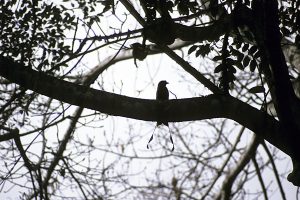
Greater racket-tailed drongo, Periyar National Park, Kerala, South India. (Photo copyright © by Kaj Halberg)
When the Eiffel Tower was constructed for the 1889 World’s Fair in Paris, it was much criticized for its design by leading artists and intellectuals. However, since then, this iron lattice tower has become one of the most iconic structures in the world. In 2015, it was visited by a staggering number of people, almost 7 million.
The tower was named for French engineer Gustave Eiffel (1832-1923), who was the leading designer and builder of it.
Various views of the Eiffel Tower. (Photos copyright © by Kaj Halberg)
Darters (Anhinga), also called snakebirds due to their long, thin, flexible neck, are large water birds, comprising two or four species. The American darter (Anhinga anhinga), often called anhinga, lives in the New World, whereas one or three species are found in the Old World. If only one species is acknowledged, it is called A. melanogaster. Most authorities, however, recognize three full species: Oriental (A. melanogaster), African (A. rufa), and Australasian (A. novaehollandiae).
American darter, drying its wings, Big Cypress National Preserve, Florida. (Photo copyright © by Kaj Halberg)
These pictures from Keoladeo National Park, Rajasthan, India, show oriental darters, drying their wings. In the lower picture, a water buffalo is walking past a darter and a little cormorant (Phalacrocorax niger). (Photos copyright © by Kaj Halberg)
Farmer on his way out into his rice fields with his hoe, near Tissamaharama, southern Sri Lanka. (Photo copyright © by Kaj Halberg)
Hiking along the beach at low tide, with dunes in the background, Fanø, Jutland, Denmark. (Photo copyright © by Kaj Halberg)
Pinus is a huge genus of conifers, counting between 126 and 160 species. Five species are shown below, whereas others are described on the page Plants: Ancient and huge trees.
Four subspecies of the lodgepole pine (Pinus contorta) are widely distributed in western North America, from sea level to subalpine montane forests.
The nominate subspecies contorta is coastal, found on the Pacific Coast from southern Alaska southwards to north-western California.
Another coastal subspecies is bolanderi, which is endemic to Mendocino County, north-western California. It is threatened by urban development.
Subspecies murrayana, variously named tamarack pine or Sierra lodgepole pine, is widely distributed in mountains, from Washington southwards to northern Baja California, and thence eastwards to southern Nevada.
Finally, subspecies latifolia is found in the Rocky Mountains, from Yukon and Saskatchewan southwards to Colorado.
The specific name is derived from the Latin con (‘with’) and torqueo (‘twisted’), referring to the low, twisted trees, commonly found along the Pacific Coast. This is also reflected in one of the common names of this species, twisted pine.
Other pictures, depicting this species, may be seen on the page Plants: Plants of Sierra Nevada.
Sunshine, illuminating foliage of a Sierra lodgepole pine, ssp. murrayana, Yosemite National Park, Sierra Nevada, California. (Photo copyright © by Kaj Halberg)
Scots pine (Pinus sylvestris) has an enormous distribution, found from Spain and Scotland eastwards across Europe and Siberia to north-eastern China, and southwards to Turkey, the Caucasus, and Mongolia. In Scandinavia, it grows northwards to the Porsanger Fjord, Norway, making it the northernmost pine species in the world. In 2014, the Scots pine was elected the national tree of Scotland.
Scots pine, Thy, Denmark. (Photo copyright © by Kaj Halberg)
The natural range of the Monterey pine (Pinus radiata) is limited to a few locations in Santa Cruz and San Luis Obispo Counties, central California, and two islands, Guadalupe and Cedros, off the west coast of northern Baja California, Mexico. In its natural range, it is seriously threatened by an introduced species of fungus, the pitch canker (Fusarium circinatum).
Elsewhere, however, this tree has been planted extensively, especially in Australia, New Zealand, Spain, Argentina, Chile, Uruguay, Kenya, South Africa, and the island of Tristan da Cunha.
Wind-shaped Monterey pine, Muriwai Beach, New Zealand. (Photo copyright © by Kaj Halberg)
As its name implies, the Canary Island pine (Pinus canariensis) is endemic to the Canary Islands, where it forms extensive forests on the western islands. It is a large tree, growing to 40 m tall, but massive trees are rare due to former over-cutting. Some examples are shown on the page Plants: Ancient and huge trees.
Canary Island pine, Roque Nublo area, Gran Canaria. (Photo copyright © by Kaj Halberg)
The blue pine (Pinus wallichiana) is distributed in montane areas from Afghanistan and the Himalaya eastwards to south-western China. The popular name stems from its needles, which have a bluish tinge. In Nepal, honey dew from aphids living on the needles is eaten as candy.
The medicinal usage of this plant is described on the page Plants: Plants in folklore and poetry.
Rocks and blue pines, silhouetted against the snow-clad peak of Annapurna II (7,937 m), Upper Marsyangdi Valley, Nepal. (Photo copyright © by Kaj Halberg)
The bishop pine (Pinus muricata) is a coastal species with a very restricted distribution, found only in a few locations on the Californian coast, on some of the Channel Islands, and two places in Baja California, Mexico.
The popular name arose, when this tree was first identified near the Mission of San Luis Obispo, California.
Sunset behind an old bishop pine, Salt Point State Park, California. (Photo copyright © by Kaj Halberg)
Cattle, crossing the Rapti River, southern Nepal. The watchtower in the background is used at night by men, who shoo away grazing animals like rhinos (Rhinoceros unicornis) and wild pigs (Sus scrofa). Cattle and their origin are described on the page Animals: Animals as servants of Man. (Photo copyright © by Kaj Halberg)
Song sparrow (Melospiza melodia), singing from the top of a great mullein (Verbascum thapsus), Malheur National Wildlife Refuge, Oregon. This bird is described on the page Animals – Birds: Birds in the United States and Canada. (Photo copyright © by Kaj Halberg)
Birgitta Birgersdotter (known as ‘Holy Birgitta’) was a Swedish saint, born around 1303, who died in Rome 1373 during a pilgrimage to the Holy Land. The following year, her earthly remains were brought back to Sweden and buried in Vadstena Abbey, near Linköping. According to legend, the ship that carried her remains landed on the east coast of the island of Öland, in the Baltic Sea. Later, a chapel, named Sankta Brita’s Kapell (‘Saint Birgitta’s Chapel’), 27 m long and 12 m wide, was erected at the site, today called Kapelludden (‘Chapel Spit’). The chapel now lies in ruins.
Another legend has it that the chapel is dedicated to a Celtic female saint, Brigida.
Silhouettes of the ruined Saint Birgitta’s Chapel and a lighthouse, Kapelludden, Öland. (Photo copyright © by Kaj Halberg)
The impala (Aepyceros melampus) is a rather large, but slender and graceful antelope. The male is a magnificent animal, with lyre-shaped horns, which may reach a length of 90 cm.
This species is common in much of eastern and southern Africa. Two subspecies are recognized, the nominate, which is distributed from southern Uganda and central Kenya southwards to eastern South Africa and the major part of Namibia, and subspecies petersi, known as black-faced impala, which is restricted to north-western Namibia and south-western Angola. This subspecies can be identified by the black markings on its face.
The generic name is from the Greek aipus (‘high’ or ‘steep’) and keras (‘horn’), referring to the long horns of the male, whereas the specific name is from the Greek melas (‘black’) and pous (‘foot’), alluding to the black spots on its hind feet. The name impala is a corruption of the Tswana word phala, which means ‘red antelope’.
Impala males, Samburu National Park, Kenya. (Photo copyright © by Kaj Halberg)
Two species of false cypresses, of the genus Chamaecyparis, are native to Taiwan, the Taiwan red cypress (C. formosensis) and the Taiwan yellow cypress (C. obtusa var. formosana), both growing in areas of high precipitation at medium elevations, between 1,300 and 2,600 m altitude. These magnificent trees are described in detail on the page Plants: Ancient and huge trees.
In Yushan National Park, central Taiwan, two large red cypresses were killed by a forest fire in 1963. The hardened trunks of these great trees, popularly known as the Fuci Trees, were standing for many years, until one toppled in 2019.
One of the Fuci Trees, seen as a silhouette. (Photo copyright © by Kaj Halberg)
Te Reinga is a prominent rock at Cape Reinga, the northernmost point in New Zealand. This is the place, where, according to Maori lore, the spirits enter the underworld. An ancient pohutukawa tree (Metrosideros excelsa), named Te Aroha, clings to the rock. The spirits descend to the water on steps, formed by the tree’s roots. They then continue to Hawaiki, their spiritual home. Unlike other pohutukawa trees, which display an abundance of red flowers in summer, Te Aroha has never been known to flower.
Pohutukawa is described on the page Plants: Ancient and huge trees.
Te Reinga, with the ancient pohutukawa tree Te Aroha, silhouetted against a rough Tasmanian Sea. (Photo copyright © by Kaj Halberg)
The most widespread swallow in the world is the barn swallow (Hirundo rustica). This species is mostly nesting on or inside buildings, very often in stables or barns – hence its name.
Six subspecies are distributed across the major part of the Northern Hemisphere, from the British Isles eastwards to Japan, and from northern Norway, central Siberia, and Kamchatka southwards to North Africa, Egypt, southern Iran, and southern China, and in most of North America, from northern Canada southwards to southern Mexico.
Four of the subspecies are migratory, spending the winter as far south as South Africa, northern Australia, and Argentina. The birds may be seen year-round in southern Mexico, southern Iberian Peninsula, Egypt, the Himalaya, southern China, and Taiwan.
The barn swallow is still common in Denmark, although it has declined in later years. In these pictures, barn swallows are resting on a ventilation shaft on a farm building in Jutland (top), and on a TV antenna in Thy. (Photos copyright © by Kaj Halberg)
Fishermen at sunset, Lake Chilka, Odisha, eastern India. (Photo copyright © by Kaj Halberg)
Gol Gumbaz is the mausoleum of King Muhammad Adil Shah, of the Adil Shah Dynasty, located in Vijayapura (formerly Bijapur), Karnataka, India. Construction of the tomb began in 1626 and was completed in 1656. The name is derived from gol gombadh (‘circular dome’). It was built in a way that even a slight whisper by a person, standing inside the gallery, can be heard everywhere in the gallery, and clapping produces an echo that can be heard several times.
Other pictures, depicting Gol Gumbaz, are shown on the page Religion: Islam.
Corner building in the Gol Gumbaz complex. (Photo copyright © by Kaj Halberg)
Silhouetted tree, Dasyueshan National Forest, central Taiwan. (Photo copyright © by Kaj Halberg)
For thousands of years, Arabs were trading along the East African coast, sailing in their typical dhows – an ancient Arabian type of sailboat. Africans have adopted the dhow, and today you still see them in large numbers along the East African coast.
Dhows and many other boat types are described on the page Culture: Boats.
This dhow is passing by a fisherman, pulling his canoe along the shore, near Somanga, Tanzania. (Photo copyright © by Kaj Halberg)
Trees, silhouetted against the evening sky, Waitomo, New Zealand. (Photo copyright © by Kaj Halberg)
The common eider (Somateria mollissima) has an almost circumpolar distribution, found along Arctic and Northern Temperate coasts, from the Kola Peninsula westwards across Scandinavia, the northern British Isles, Iceland, Greenland, Maine, Arctic Canada, and Alaska, to the extreme eastern Siberia.
The nest of this species is built near the seashore, lined with down, which the female plucks from her own breast. This soft down has been harvested by people for hundreds of years, used as filling in pillows, quilts, and jackets. This harvesting was done with no harm to the birds, as it took place when the ducklings had left the nest.
The scientific name is derived from the Greek soma (‘body’) and erion (‘wool’), and the Latin mollissimus (‘very soft indeed’), all referring to the soft down feathers. The name eider is a corruption of the Icelandic name of the bird, æðarfugl, which is derived from the Old Norse æthr.
In Northumberland, southern Scotland, the eider duck is known as the cuddy duck, named after Saint Cuthbert (c. 634-687), a monk, bishop, and hermit of the early Northumbrian Celtic Church. While on the Farne Islands, he instigated special laws to protect the ducks and other seabirds, nesting on these islands.
Common eiders, resting on coastal rocks on the islet of Christiansø, Bornholm, Denmark. (Photo copyright © by Kaj Halberg)
In the Kashmir Valley, northern India, lakes and canals form important waterways for transportation of goods. Other pictures from this area may be seen on the pages Culture: Boats, and Culture: A place to live.
Early in the morning, this man is paddling his boat across Dal Lake, Kashmir. (Photo copyright © by Kaj Halberg)
Gotland sheep in evening light, Zealand, Denmark. Domestic sheep are described on the page Animals: Animals as servants of Man. (Photo copyright © by Kaj Halberg)
On Lake Tana, Ethiopia, reed boats, made from papyrus stems (Cyperus papyrus), have been made since the 9th Century B.C., or earlier. Reed boats and other boat types are described on the page Culture: Boats.
This girl is punting a primitive boat, made from a few papyrus stems, tied together, on Lake Tana, Ethiopia. (Photo copyright © by Kaj Halberg)
In Indian cities, platforms or stairs, called ghats, are often established along river sides. On these ghats, various activities take place, one being laundry washing. This washing is often carried out by men of a certain cast, called dhobi, derived from the Hindi dhona (‘to wash’). A wallah is a person, who is attached to a specific trade or work, and Indian laundrymen are labelled dhobi wallahs.
Dhobi wallahs at work on ghats along the Ganges River, Varanasi. (Photo copyright © by Kaj Halberg)
The Eurasian crane (Grus grus) is the most widely distributed crane species in the world, found from England, eastwards across the entire Siberian taiga to northern Mongolia and China, with small isolated populations in southern Europe, Turkey, the Caucasus, and Tibet.
Subspecies archibaldi from Turkey and the Caucasus was described scientifically as late as 2008. Formerly, eastern Asian populations were considered a separate subspecies, lilfordi, but today most authorities regard these birds as belonging to the nominate race.
With a total population of nearly 700,000, the Eurasian crane is one of the most numerous crane species, only surpassed by the sandhill crane (Grus canadensis). In western Europe, breeding numbers have increased dramatically in several countries, including Sweden with 15,000 to 20,000 pairs, Germany with about 8,000 pairs, and Denmark with about 500 pairs. In 1998, the total number in Europe was estimated at 45,000 pairs, but this number has since increased significantly.
Pictures, depicting several crane species may be seen in the gallery at Animals: Cranes, and the sandhill crane is described on the page Animals – Birds: Sandhill cranes are a threat to breeding birds.
Feeding Eurasian cranes, Hornborgasjön, Sweden. This lake is visited by up to 10,000 cranes in March-April, resting here on their way to their breeding grounds. (Photo copyright © by Kaj Halberg)
Among the 13 species of true cranes, only the demoiselle crane (Grus virgo) and the blue crane (G. paradisea) have feathered crowns.
The demoiselle crane is still common, counting between 230,000 and 260,000, and this number is fairly stable. This species is distributed from Ukraine across Kazakhstan to Mongolia and north-eastern China. A tiny breeding population is also found in eastern Turkey. This was also previously the case in Morocco, where the demoiselle crane is today extinct. Formerly, it was also breeding in Romania.
In Europe, this species was first brought to France, where Queen Marie Antoinette (1755-93) found it so graceful that she dubbed it grue demoiselle (‘damsel crane’). This name was later adopted by the British.
Traditionally, in the village of Kichan, Rajasthan, north-western India, wintering demoiselle cranes of this area, altogether 5,000-6,000, are fed every morning. At dawn, the cranes arrive at a particular yard in the village, where huge amounts of wheat and other cereals are strewn. This food is donated by rich businessmen, belonging to the Jain religion, which is described in detail on the page Religion: Jainism.
These women from the village of Kichan are watching demoiselle cranes, flying over. (Photo copyright © by Kaj Halberg)
Near the town of Puri, Odisha (formerly Orissa), eastern India, you can still watch fishermen, working the traditional way. Their flat-bottomed boats consist of planks, which are ’sewn’ together, using thick grass ropes.
At dawn, the fishermen push their boats through the surf, placing a huge fishing net from the shore, so that it forms an inverted ‘U’. Now follows several hours of hard work, when the fishermen, often assisted by their wives, haul the net ashore. Usually, their catch is rather small, and in later years it has been further diminished due to overfishing by trawlers from Kolkata (Calcutta). The catch is placed in baskets or in carapaces of sea turtles, which the women place on their head, carrying it to their home just above the beach.
Other pictures from Puri are shown on the page Fishing.
At dawn, Puri fishermen row their boat out through the surf. (Photo copyright © by Kaj Halberg)
The mallard (Anas platyrhynchos) is very widely distributed across subarctic, temperate, and subtropical areas of North America, Eurasia, and North Africa, southwards to Mexico, Morocco, Egypt, Pakistan, and China, and it has also been introduced to many other places as a hunting object, including South America, New Zealand, Australia, and South Africa.
The drake is a gorgeous bird in breeding plumage, with grey sides, purple breast, and glossy-green head, with a blue shine from certain angles. The female is a uniform speckled brown.
Pictures, depicting male and female, may be seen on the page Animals: Urban animal life.
Evening atmosphere at a pond with mallards, Funen, Denmark. (Photo copyright © by Kaj Halberg)
Undoubtedly, the best known of all cactus species is the huge saguaro (Carnegiea gigantea), which can grow to 12 m tall. It has provided a decorative background in countless western films, but is in fact of a rather limited distribution, growing only in the Sonoran Desert of Mexico and southern Arizona, and in a small area of adjacent California.
This species and many other cacti are described on the page Plants: Cacti.
Saguaros, Saguaro West National Park, Arizona. The picture with the Full Moon has not been manipulated. (Photos copyright © by Kaj Halberg)
The huge organ-pipe cactus (Stenocereus thurberi), growing to a height of 5 m, somewhat resembles the saguaro, but is branched from ground-level. It is distributed in north-western Mexico, in the Sonora Desert and on Baja California, with a small population in the extreme southern United States, notably in the Organ Pipe Cactus National Monument, Arizona.
The popular name refers to the stems, which resemble pipes of a church organ. In Spanish, fruits of this species are known as pitaya dulce (‘sweet pitaya’), the word pitaya referring to edible fruits of Mexican cacti in general.
Organ-pipe cactus at sunset, Organ Pipe Cactus National Monument, Arizona. (Photo copyright © by Kaj Halberg)
Cylindropuntia bigelovii is a cactus species, popularly called teddybear cholla, named after the shape of the upper segments, which resemble the arms of a teddybear. However, should this resemblance make you hug it, you will regret it a million times: the ‘softness’ of this plant is deceptive, as it consists of a solid mass of very sharp spines. Another popular name is jumping cholla, referring to the loose segments, which ‘jump’ on bypassing animals or people.
This plant is distributed from extreme southern Nevada southwards through eastern California and western Arizona to Baja California, Sonora, and Sinaloa in Mexico. It is one among many plant species named in honour of surgeon and botanist John Milton Bigelow (1804-1878), who collected many new species on expeditions to south-western U.S. and northern Mexico.
A dense stand of teddybear cholla is found in Joshua Tree National Park, California, where this picture was taken. (Photo copyright © by Kaj Halberg)
Buildings, silhouetted against a gorgeous evening sky, Taichung, Taiwan. (Photos copyright © by Kaj Halberg)
In Chinese mythology, the dragon is a symbol of power, strength, and good luck, and most Daoist temples abound with images of these creatures.
Dragons, and other aspects of Daoism, are presented on the page Religion: Daoism in Taiwan.
Dragons and other sculptures, adorning Bai Sa Wan Mazu, a Daoist temple near Tongxiao, western Taiwan. (Photo copyright © by Kaj Halberg)
Men perform a dragon dance outside a Daoist temple, dedicated to Wang-yeh, the god of diseases, Beimen, Taiwan. (Photo copyright © by Kaj Halberg)
Pallas’s fish-eagle (Haliaeetus leucoryphus) breeds from Russia and Turkmenistan eastwards to northern China, southwards to India and Myanmar. It has declined drastically during the last 50 years, mainly due to increased usage of pesticides. It is listed as ‘endangered’ on the IUCN Red List of threatened species. Northern populations are migratory, wintering from northern India westwards to the Persian Gulf.
The common name commemorates Prussian naturalist, ethnographer, and explorer Peter Simon Pallas (1741-1811), who, in 1767, was invited by Catherine II of Russia to become a professor at the St. Petersburg Academy of Sciences. Between 1768 and 1774, he led an expedition to the Caspian Sea, the Ural and Altai Mountains, Lake Baikal, and the upper Amur River. His work from this expedition was published in 3 volumes 1771-1776, titled Reise durch verschiedene Provinzen des Russischen Reichs (‘Journey through various provinces of the Russian Empire’).
In 1793 and 1794, Pallas led a second expedition to southern Russia, visiting the Crimea, the Black and Caspian Seas, and the Caucasus Mountains. His account of this expedition was published 1799-1801, titled Bemerkungen auf einer Reise in die Südlichen Statthalterschaften des Russischen Reichs (‘Notes from a trip to the southern lieutenancies of the Russian Empire’).
Nest of Pallas’s fish-eagle, Keoladeo National Park, Rajasthan, India. A full-grown young is sitting in the nest. (Photo copyright © by Kaj Halberg)
In former days, the large-billed crow (Corvus macrorhynchos) was called jungle crow, a name that also included two other crows, which some authorities today treat as separate species, the Indian jungle crow (C. culminatus) and the eastern jungle crow (C. levaillantii). They are extremely similar, so why these splits were made, is a mystery to me.
In its widest sense, including the two splits, this bird is found from Afghanistan and the entire Indian Subcontinent eastwards to south-eastern Siberia (Ussuriland) and Japan, and thence southwards through Southeast Asia and the Philippines to Indonesia. It lives in a wide variety of habitats, including forests, rocky areas, cultivated land, and along rivers. In the Himalaya, it is found up to an elevation of at least 3,000 m.
The specific name is derived from Ancient Greek makros (‘long’ or ‘large’) and rhynkhos (‘bill’).
Other pictures, depicting this species, are shown on the page Animals – Birds: Corvids.
This large-billed crow, sitting in the top of a blue pine (Pinus wallichiana), Upper Marsyangdi Valley, Nepal, is silhouetted against the snow-covered face of Annapurna II (7,937 m). (Photo copyright © by Kaj Halberg)
The grey, or Himalayan, treepie (Dendrocitta formosae), another member of the crow family, is distributed along the foothills of the Himalaya, eastwards through montane areas of northern Indochina and southern China to Taiwan. In Taiwan, however, nominate subspecies formosae lives almost down to sea level.
In most areas, this bird is rather shy, but in Taiwan it has become accustomed to people, showing no fear at all. All the pictures below are from the city of Taichung.
Other pictures, depicting the grey treepie, are shown on the pages Animals – Birds: Birds in Taiwan, and Animals – Birds: Corvids.
A small flock of grey treepies, gathered on wires at dawn. (Photo copyright © by Kaj Halberg)
These birds are sitting on pipes from a water tank. (Photo copyright © by Kaj Halberg)
Grey treepie, sitting on an antenna. (Photo copyright © by Kaj Halberg)
Basket boats are a type of coracle, small, circular boats that are woven from bamboo or other materials, thus resembling huge baskets. They were formerly used in India, Iraq, Tibet, and other places.
In Vietnam, a type of coracle, called thung chai, evolved during the French colonial era. It seems that when the French had colonized Vietnam, they began levying heavy taxes left and right, including a tax on the ownership of boats.
Most Vietnamese fishermen, who depended on boats for their livelihood, could not afford to pay the taxes, so they invented a new type of circular boat, the thung chai, arguing that they were not boats at all, but baskets, and therefore shouldn’t be taxed. It seems that they succeded in their endeavour, and ever since then these vessels have been a common sight in central Vietnam.
Thung chai, Da Nang, Vietnam. Other pictures, depicting this boat type, are shown on the pages Culture: Boats and ships, and Fishing. (Photos copyright © by Kaj Halberg)
Wild angelica (Angelica sylvestris) is a large umbellifer, which may grow to 2.5 m tall. The stem is purplish, and the flowering branches emerge from large, inflated sheaths. In former times, it was eaten as spinach and was a valuable source of vitamin C.
This species is distributed from Europe and Turkey eastwards across Siberia to north-eastern China. It has also been introduced elsewhere, including Canada, where it has been declared an invasive weed.
The specific name means ‘found in woodland’, from the Latin silva (‘forest’). However, forests and woodland are not its primary habitats, as it prefers rather open areas, including marshes, fens, and edges of fields.
A close relative, the garden angelica (A. archangelica), is presented on the page Plants: Plants in folklore and poetry.
Wild angelica, photographed one early winter morning, Funen, Denmark. (Photo copyright © by Kaj Halberg)
Reverse silhouette: Irrigation near Agency Lake, Oregon, United States. (Photo copyright © by Kaj Halberg)
The Nilgiri tahr (Nilgiritragus hylocrius) is a rare species of sheep, which is restricted to mountains of South India. Formerly, this species, which numbers around 3,100 individuals, was placed in the genus Hemitragus, together with the Himalayan tahr and the Arabian tahr. However, recent genetic research has shown that it is more closely related to sheep of the genus Ovis than to tahrs, and, consequently, it was moved to a separate genus.
Other pictures, depicting this species, are shown on the pages Animals – Mammals: Mammals in the Indian Subcontinent, and Quotes on nature.
Eravikulam National Park, Kerala, where this picture was taken, is a stronghold of the Nilgiri tahr, housing an estimated 700-800 individuals, app. one-fourth of the total population. (Photo copyright © by Kaj Halberg)
The blackboard tree (Alstonia scholaris), also known as devil tree, milkwood-pine, or white cheesewood, belongs to the dogbane family (Apocynaceae). It grows in mixed forests from the Indian Subcontinent eastwards to south-western China, and thence south through Southeast Asia and the Philippines to the Indonesian Archipelago and New Guinea to northern Australia.
Bark and leaves are utilized medicinally for headache, influenza, bronchitis, and pneumonia, and the wood is used for making coffins.
Other pictures, depicting this species, are shown on the page Plants: Ancient and huge trees.
Blackboard tree is very commonly planted in Taiwan. This tree, with long, slender, pendent fruits, was observed in Tunghai University Park, Taichung. (Photo copyright © by Kaj Halberg)
A number of deer species are described on the page Animals – Mammals: Deer.
Originally, the fallow deer (Dama dama) was indigenous to Turkey, the Caucasus, and Iran, and possibly also the Balkans and Italy. At an early stage, it was introduced to deer parks all over Europe, and in modern times, it has also been introduced to many other countries, including Australia, New Zealand, Argentina, and the United States. It often forms feral populations.
This picture shows fallow deer in Jægersborg Deer Park, Zealand, Denmark. In the 1600s, this deer and red deer (Cervus elaphus) were introduced to this park as hunting objects for the king and his retinue. Today, about 1,600 fallow deer and 300 red deer live here. (Photo copyright © by Kaj Halberg)
Another deer, which somewhat resembles the fallow deer, is the handsome spotted deer (Axis axis), in India known as chital. This species is rather common in the major part of the Indian Subcontinent, but is found nowhere else.
A number of deer species are described on the page Animals – Mammals: Deer.
Early in the morning, spotted deer are silhouetted against a grassy plain in Kanha National Park, Madhya Pradesh, India. (Photo copyright © by Kaj Halberg)
The mule deer (Odocoileus hemionus), also known as black-tailed deer, is widespread and rather common in the western half of North America, from southern Alaska southwards to Baja California and central Mexico. The name mule deer refers to its rather large ears, reflected in the specific name, which is Ancient Greek, meaning ‘mule’.
Grazing mule deer in morning mist, Salt Point State Park, California. (Photo copyright © by Kaj Halberg)
The flamboyant tree (Delonix regia), also called flame tree, is a huge tree of the pea family (Fabaceae), named for its gorgeous flowers. It is native to Madagascar, but is cultivated as an ornamental in almost all warmer countries.
Other pictures, depicting this species, are shown on the pages Plants: Ancient and huge trees, and Nature: Nature’s patterns.
This picture from Taiwan shows the huge pods of the flamboyant tree, which can up to 60 cm long and 5 cm wide. (Photo copyright © by Kaj Halberg)
Sunrise behind pods of flame tree, Tunghai University Park, Taichung, Taiwan. (Photo copyright © by Kaj Halberg)
The black plumage of the male blackbird (Turdus merula) has given rise to its name. Until about the 17th century, another name of this thrush was ouzel, or wosel, from Old English osle. In A Midsummer Night’s Dream, by William Shakespeare (1564-1616), the weaver Nick Bottom sings:
The woosell cocke, so blacke of hew,
With orenge-tawny bill,
The throstle, with his note so true,
The wren and little quill.
Formerly, the blackbird was a shy forest bird, but in the last hundred years or so, it has spread to virtually all urban areas in Europe, today being one of the most common city birds. It is distributed across Europe and the Middle East, eastwards to Kazakhstan and Kyrgyzstan, and it has also been introduced to Australia and New Zealand.
The blackbird and many other thrushes are described on the page Animals – Birds: Thrushes.
Blackbird, sitting on a straw roof at dawn, Funen, Denmark. (Photo copyright © by Kaj Halberg)
The Norway spruce (Picea abies) is native from Scandinavia and the Alps, south to the Balkans and eastwards to somewhere in Russia. Its eastern limit is very difficult to define, as it hybridizes freely with the Siberian spruce (P. obovata), which is distributed from western Russia and eastern Finland eastwards across Siberia. Norway spruce is widely planted elsewhere for its wood.
The specific name is the Latin generic name of firs. It was given in allusion to the fact that the Norway spruce, at some distance, often resembles the common fir (Abies alba).
Other pictures, depicting this species, are shown on the page Plants: Ancient and huge trees.
Early in the morning, a Norway spruce is seen as a silhouette against the mountain Sassolungo (3,181m), Dolomites, northern Italy. (Photo copyright © by Kaj Halberg)
Norway spruce and waterfall, Vrata Valley, Triglavski National Park, Slovenia. (Photo copyright © by Kaj Halberg)
Rays of light penetrate a spruce plantation, Velling Skov, Jutland, Denmark. (Photos copyright © by Kaj Halberg)
The mute swan (Cygnus olor), which may grow to 1.5 m long, is native to northern Europe, from southern Norway and southern Finland, southwards to southern France and Romania, and from Ireland eastwards to western Russia and Ukraine, and with patchy breeding occurrence in the Balkans, Turkey, and Central Asia, eastwards to southern Siberia, Mongolia, and northern China. It has also been introduced elsewhere, including North America, Australia, New Zealand, and South Africa.
It is described in depth on the page Animals – Birds: Swans.
Mute swans, Albrunna, Öland, Sweden. (Photo copyright © by Kaj Halberg)
Iquique copao (Eulychnia iquiquensis) is a cactus species, which is endemic to a narrow and barren coastal strip in central Chile, growing up to an altitude of about 1,100 m, from south of Acida southwards almost to Copiapó. This tree-like cactus is much branched from near ground-level, older stems and branches being without spines, while younger ones near the top have numerous spines.
The specific name refers to the coastal city of Iquique.
Iquique copao is quite common in Pan de Azucar National Park. (Photo copyright © by Kaj Halberg)
Winter stems of great mullein (Verbascum thapsus) stand out against sea water, Nature Reserve Vorsø, Jutland, Denmark. This plant is described on the page Plants: Plants in folklore and poetry. (Photo copyright © by Kaj Halberg)
In the past, all grey langurs on the Indian Subcontinent were regarded as belonging to a single species, Semnopithecus entellus, which was divided into six subspecies. However, recent morphological studies, combined with DNA-analyses, have revealed that the grey langurs should be regarded as six full species: northern plains langur (S. entellus), terai langur (S. hector), Nepal langur (S. schistaceus), Kashmir langur (S. ajax), black-footed langur (S. hypoleucos), and tufted langur (S. priam).
The generic name is from the Greek, semnos (‘sacred’) and pithekos (‘monkey’), alluding to the fact that monkeys are sacred to Hindus.
Langurs and many other monkeys are presented in depth on the page Animals – Mammals: Monkeys and apes.
The northern plains langur (S. entellus) is widespread in northern, central, and south-central India, from Rajasthan, Uttar Pradesh, and West Bengal southwards to Telangana and northern Karnataka and Kerala. This species is quite common, living in a variety of habitats, including forests, scrubland, temple groves, gardens, and towns, up to an altitude of c. 1,700 m.
Morning sunshine creates contours around these northern plains langurs, sitting in a tree in Ranthambhor National Park, Rajasthan. (Photos copyright © by Kaj Halberg)
As its name implies, the black-footed langur (S. hypoleucos) has jet-black hands and feet, contrasting sharply with its grey arms and legs. It occurs in the West Ghats of south-western India, from Goa southwards through Karnataka to Kerala. In some areas, it is seriously threatened by hunting, and it has already been extirpated from parts of the Brahmagiri Hills in Kodagu District, Karnataka.
Some authorities believe that the black-footed langur is a natural hybrid between the northern plains langur and the Nilgiri langur (S. johnii), others regard it as a subspecies of the former.
This black-footed langur is climbing up a dead bamboo stem, Anshi National Park, Karnataka. (Photo copyright © by Kaj Halberg)
Four subspecies of the purple-faced langur (S. vetulus) are recognized, all restricted to Sri Lanka, and all four subspecies are considered endangered, as they are believed to have undergone a decline of more than 50% in the last 40 years due to habitat loss and hunting.
Formerly, this monkey was placed in the genus Trachypithecus, but, according to most authorities, this genus is now restricted to the easternmost parts of the Indian Subcontinent, and Southeast Asia.
Subspecies philbricki of the purple-faced langur is found in forests of moister areas of the dry zone of Sri Lanka. This picture is from Polonnaruwa. (Photo copyright © by Kaj Halberg)
The lesser flamingo (Phoeniconaias minor) breeds mainly in the Rift Valley Lakes of Ethiopia, Kenya, and Tanzania, while three smaller breeding populations occur in West Africa, Namibia, and Gujarat, India. When not breeding, this species occurs in virtually every sub-Saharan country, across the Arabian Peninsula to India and Sri Lanka. The global population has been estimated at between 2.2 and 3.2 million. (Source: iucnredlist.org/details/22697369/0)
Lake Bogoria is an alkaline lake in northern Kenya, which, at times, is visited by up to a million lesser flamingos. In these pictures, the birds are silhouetted against mist from hot springs at the lake side. (Photos copyright © by Kaj Halberg)
Silhouetted against the evening light, this couple is walking hand-in-hand under a bridge in eastern Jutland, Denmark. Ousted Church is seen in the background. (Photo copyright © by Kaj Halberg)
In former days, the pretty painted stork (Mycteria leucocephala) had a wide distribution in Asia, found in the Indus Valley in Pakistan, in India, Sri Lanka, Indochina, Malaysia, and southern China. Today, however, it is only common locally in India and Sri Lanka, elsewhere it is either very rare, or has disappeared entirely.
Other pictures, depicting this bird, are shown on the page Animals – Birds: Birds in the Indian Subcontinent.
Painted storks at sunset, Keoladeo National Park, Rajasthan, India. It is a common breeding bird in this sanctuary. (Photos copyright © by Kaj Halberg)
Abdim’s stork (Ciconia abdimii), also known as white-bellied stork, is distributed across the Sahel Zone of northern Africa, to Ethiopia, northern Kenya, Somalia, and the south-western tip of the Arabian Peninsula, and in south-eastern Africa, from southern Tanzania to South Africa.
The name commemorates Bey el-Arnaut Abdim (1780–1827), Turkish governor of Wadi Halfa, Sudan.
Other pictures, depicting this small stork, are shown on the page Animals – Birds: Birds in Africa.
Abdim’s storks, resting in a tree, Cameroun. (Photo copyright © by Kaj Halberg)
The place of origin of the coconut palm (Cocos nucifera) is unknown, and today it is found everywhere along tropical coasts, in some areas also inland. This species is utilized for countless purposes. Oil from the nuts, and also dried copra, is used in cooking and in lamps. Mats, weaved from the leaves, are used as walls and roofs in houses, and mats and rope are produced from the fibres in the husk. Charcoal is made from the shells, and the trunk is utilized as timber and firewood.
Pictures, depicting leaves of the coconut palm, are shown on the page Nature: Nature’s patterns.
Sunrise behind coconut palms, Goa, India. (Photo copyright © by Kaj Halberg)
The doum palm (Hyphaene thebaica) differs from most other palms through its branched trunk, with a fan of leaves at the end of each branch. This species is distributed across the African Sahel zone, and in East Africa, from northern Tanzania northwards to Egypt, and also in Israel, Jordan, and the Arabian Peninsula.
Doum palms, photographed late in the afternoon, Moradi, Niger. (Photo copyright © by Kaj Halberg)
Doum palms at dawn, Fuloha Oasis, Ethiopia. (Photo copyright © by Kaj Halberg)
As early as c. 3000 B.C., the date palm (Phoenix dactylifera) was cultivated in Mesopotamia, between the rivers Euphrates and Tigris, and it was sacred in Ancient Egypt. This is not very odd, its overwhelming production of dates taken into consideration. Not only the fruits are edible – the young and tender leaves are eaten as cabbage. Juice is extracted from the young shoots at the top of the trunk to produce alcohol, and when the tree dies, the trunk is utilized as excellent timber.
This boy has climbed to the top of a dead date palm near Tamanrasset, Algeria. (Photo copyright © by Kaj Halberg)
Morning fog gives way to sunshine in an oak forest near Ghare, Annapurna, Nepal. (Photo copyright © by Kaj Halberg)
The black vulture (Coragyps atratus) is a widespread and common scavenger, found from south-eastern United States southwards to Chile and Uruguay. Although it mainly eats carrion and garbage, it is also able to kill smaller animals, notably newly hatched sea turtles, making their way towards the sea.
Other pictures, depicting this species, are found on the page Animals – Birds: Birds of Costa Rica and Guatemala.
Black vultures, gathered in a night roosting tree, Cahuita, Limón, Costa Rica. (Photo copyright © by Kaj Halberg)
Black vulture, resting on a pole near the Pacific Ocean, Monterrico, Guatemala. (Photo copyright © by Kaj Halberg)
Silhouetted trees, Brahmagiri Mountains, Karnataka, India. (Photo copyright © by Kaj Halberg)
This man is washing his child in the Rapti River, southern Nepal. (Photo copyright © by Kaj Halberg)
The chestnut-headed bee-eater (Merops leschenaulti) is widely distributed, from the Indian Subcontinent east to southern China, and thence south through Indochina and Malaysia to Indonesia. It is mainly found in highlands of moderate elevation, breeding in open woodland.
Other pictures, depicting this bird, are shown on the page Animals – Birds: Birds in the Indian Subcontinent.
Chestnut-headed bee-eaters, gathered at their night roost, Chitwan National Park, Nepal. (Photo copyright © by Kaj Halberg)
A description of the beech (Fagus sylvatica), and many pictures depicting it, are found on the page Plants: Ancient and huge trees.
Silhouettes of beeches (Fagus sylvatica), eastern Funen, Denmark. (Photo copyright © by Kaj Halberg)
Foggy beech forest, Velling Skov, Jutland, Denmark. (Photo copyright © by Kaj Halberg)
Goblin Valley State Park is an area of Entrada Sandstone, situated on the Colorado Plateau, Utah, United States, eroded by rainfall and wind into the weirdest forms, called goblins.
A number of pictures, depicting these formations, as well as other geological phenomena on the Colorado Plateau, may be seen on the page Nature: Nature’s art.
This formation in Goblin Valley State Park might be called ‘Snoopy kissing E.T.’ (Photo copyright © by Kaj Halberg)
Mountains and trees, silhouetted against a white cloud, Jhong River Valley, Mustang, Nepal. (Photo copyright © by Kaj Halberg)
Golden Gate Bridge, San Francisco, California, is a suspension bridge, 2,737 m (8,981 feet) long, spanning the Golden Gate, the strait connecting San Francisco Bay and the Pacific Ocean. This bridge was opened in 1937, and, until 1964, it had the longest main span of any suspension bridge in the world, at 1,280 m (4,200 feet).
Other pictures, depicting this bridge, and many other bridges, are found on the page Culture: Bridges.
(Photo copyright © by Kaj Halberg)
For thousands of years, a huge marsh area in southern Iraq, between the Euphrates and Tigris Rivers, was the home of the Madan tribe, whose way of life was completely adapted to the wet habitat. They moved about in canoes, built their reed houses on islets, and made a living by hunting and fishing, growing rice, and raising water buffaloes.
The regime of Saddam Hussein Abd al-Majid al-Tikriti (1979-2003) put an end to their way of life by draining the marshes, as a retaliation for the Madan siding with the Americans during the First Gulf War (1990-1991).
My visit to this interesting wetland is related on the pages Travel episodes – Iraq 1973: The hospitable mudir, and Iraq 1973: Dust storm and sheep’s head.
At dusk, this Madan is punting his canoe in the marshes of southern Iraq. (Photo copyright © by Kaj Halberg)
The hamerkop (Scopus umbretta) is a small, heron-like bird, which, however, forms a separate family, Scopidae. When the Boer people arrived in South Africa in the 18th century, they named this bird hamerkop (‘hammer-head’ in Dutch), due to its maul-shaped crest. Later, this name was adopted by the British.
This bird has a huge distribution, covering most of sub-Saharan Africa, Madagascar, and the south-western tip of the Arabian Peninsula. Traditionally, it is protected in many places, making it rather confident – a fact shown on the page Culture: Boats. Other pictures, depicting this bird, are shown on the page Animals – Birds: Birds in Africa.
Hamerkop, Lake Baringo, Kenya. (Photo copyright © by Kaj Halberg)
Homeless man, looking for food in a trash can, Kowloon, Hong Kong. (Photo copyright © by Kaj Halberg)
Anglers, trying their luck, San Francisco, California (top), and near Colombo, Sri Lanka. (Photos copyright © by Kaj Halberg)
In Monument Valley, Arizona, United States, rainfall and wind have eroded rocks into bizarre forms. Other remarkable rock formations are shown on the page Nature: Rocks and boulders.
(Photo copyright © by Kaj Halberg)
The oriental magpie-robin (Copsychus saularis) lives in open forest, secondary growth, and gardens, found in the major part of the Indian Subcontinent, from Indochina eastwards to central and eastern China, and thence southwards to Indonesia. It is the national bird of Bangladesh.
The male is a striking black-and-white bird, whereas the female has greyish head and breast, and immature birds are rather speckled.
In his 3-volmue work A natural history of birds : illustrated with a hundred and one copper plates, curiously engraven from the life (1731-1738), English naturalist and illustrator Eleazar Albin (c. 1690-1742) calls this bird Dial Bird or Bengall Magpie. The former name alludes to the Hindi name of the bird, dayal. Some authorities have suggested that when Swedish naturalist Carl Linnaeus (1707-1778) included it in his Systema Naturæ in 1758, he named it Gracula saularis, misunderstanding Albin’s name, thinking it had something to do with a sun dial. He then meant to call it Gracula solaris (solaris, ‘of the sun’), but by mistake wrote saularis instead.
A number of pictures, depicting this bird, are shown on the pages Animals – Birds: Birds in the Himalaya, and Birds in Taiwan.
In Taiwan, the oriental magpie-robin occurs as a native on the Kinmen Islands, and has also been introduced to the Taiwanese mainland, where it is fairly common, especially in city parks. This one was observed in Tunghai University Park, Taichung. (Photo copyright © by Kaj Halberg)
During the Hindu festival Bada Dasain, also called Dassera or Durga Puja, gigantic swings are erected in many Nepalese villages, placed at the end of long ropes, which hang down from a large branch or from the top of four long bamboo poles, tied together above.
Other Hindu festivals are described on the pages Religion: Hinduism, and Travel episodes – India 1991: Attending Hindu festivals in Rajasthan.
Girl on a gigantic swing, Pokhara, Nepal. (Photo copyright © by Kaj Halberg)
In the 1800s, about 2,000 wooden windmills were found on the Swedish island of Öland, but during the 1900s, many went into decay and were torn down. However, no less than about 355 have been preserved, forming a characteristic feature on the island.
Numerous pictures, depicting various types of mills, are shown on the page Culture: Mills.
Sunset behind a wooden windmill, Albrunna, Öland. (Photo copyright © by Kaj Halberg)
Kuremøllen is a restored Dutch type windmill near Svaneke, Bornholm, Denmark, built in 1861 to grind wheat and other crops. A bakery was opened at the mill in 1912. The mill stopped working in 1960, whereas the bakery was closed in 1976.
Cumulus clouds behind Kuremøllen. (Photo copyright © by Kaj Halberg)
An old wind-driven mill, constructed 1905, utilized to polish stones, Jordhamn, Öland, Sweden. (Photo copyright © by Kaj Halberg)
Limestone mountains at dawn, Li River, Yangshuo, Guangxi Zhuang, China. (Photo copyright © by Kaj Halberg)
Rays from the rising sun are spread star-like into the sky behind mountains in Khumbu, eastern Nepal. The upper picture shows the double-peaked mountain Ama Dablam (6,856 m), which is sacred to the local Sherpa people, the lower picture a mountain near Lukla. (Photos copyright © by Kaj Halberg)
The Ganges River is worshipped during Aarthi, a Hindu ceremony held at sunrise or after sunset. In this picture, a prist is swinging a thurible with burning incense at sunrise on the shores of the Ganges, in Varanasi. Other pictures from this sacred river are shown on the page Religion: Hinduism. (Photo copyright © by Kaj Halberg)
Dawn on the Ganges River, Varanasi. (Photos copyright © by Kaj Halberg)
Flying foxes are a group of fruit-eating bats, which were named after their fox-like faces. The genus Pteropus, counting between 54 and 60 species, are distributed in tropical and subtropical areas of eastern Africa, Asia, and Australia, and on some islands in the Indian and Pacific Oceans. The generic name is derived from Ancient Greek pteron (‘wing’) and pous (‘foot’), alluding to the skin of the wing also being attached to the feet.
The Indian flying fox (Pteropus medius, previously known as P. giganteus), is distributed throughout the Indian Subcontinent, from eastern Pakistan eastwards to western Myanmar, and from the lower Himalaya southwards to Sri Lanka. It is one of the largest bats in the world, weighing up to 1.6 kg, and with a wingspan up to 1.5 m. The specific name is Latin, meaning ‘middle’. Presumably, it refers to the fact that this is not the largest among the flying foxes – despite the former name giganteus.
Indian flying foxes, day-roosting in trees, Lake Tissa Wewa, near Tissamaharama, southern Sri Lanka. (Photo copyright © by Kaj Halberg)
Flying fox in flight, Lake Tissa Wewa. (Photo copyright © by Kaj Halberg)
Tombstones in the Veterans’ Graveyard, San Diego, California, are outlined against the morning sky. Other pictures from this graveyard, and many others, are show on the page Culture: Graves. (Photo copyright © by Kaj Halberg)
Sunset behind a Jain temple with carved lions, situated inside the Rajput fort Sonar Qila, Jaisalmer, Rajasthan, India. Jains and their faith are described on the page Religion: Jainism. (Photo copyright © by Kaj Halberg)
Erosion from sea and wind has shaped the soft Daliao Sandstone rocks in Yeliou Geopark, northern Taiwan, creating fantastic formations.
Other pictures, depicting these formations, are presented on the page Nature: Nature’s art.
This formation in Yeliou Geopark has been eroded into resembling Nefertiti, queen of Pharaoh Akhenaten, who ruled Ancient Egypt from 1353 to 1335 B.C. (Photo copyright © by Kaj Halberg)
Fisherman, throwing his net into the Rapti River, southern Nepal. (Photo copyright © by Kaj Halberg)
Early morning at Chennai Railway Station, Tamil Nadu, South India. (Photo copyright © by Kaj Halberg)
This man is at peace with the world, Bandipur, Nepal. (Photo copyright © by Kaj Halberg)
Sweet cicely (Myrrhis odorata) is native to central and southern Europe, eastwards to the Caucasus, but was introduced to the British Isles and northern Europe by monks in the Middle Age as a spice in food and alcohol. The taste of its seeds resembles liquorice or anise, hence its common name. It is still fairly common north of its native area, especially around houses and along roads.
Sweet cicely with fruits, seen as a silhouette against a white-washed wall, Öland, Sweden. (Photo copyright © by Kaj Halberg)
Nuthatches, about 29 species of the genus Sitta, are characterized by their feeding behaviour, creeping up and down tree trunks in search of larvae, which they extract from the wood, using their powerful bill. The generic name is derived from Ancient Greek sitte, a bird like a woodpecker, mentioned by Greek grammarian Hesychius of Alexandria (5th or 6th Century A.D.), and also by Greek philosopher and scientist Aristotle (384-322 B.C.).
The common nuthatch (Sitta europaea), comprising 21 subspecies, is distributed in an enormous area, found in the major part of Europe, in Turkey and the Caucasus, in the entire Siberian taiga, and in most of East Asia, including Japan and Taiwan.
Nuthatch, bringing food to its nest, Funen, Denmark. There are two subspecies in Denmark, east of Storebælt subspecies europaea, which has pale underside, and in Jutland subspecies caesia, which has rust-coloured breast and belly. On Funen, intermediate forms may be encountered. (Foto copyright © by Kaj Halberg)
Orange clouds at dawn, Oyster Bay, Long Island, New York. (Photo copyright © by Kaj Halberg)
Paper cuttings, depicting Judy and me, made by Judy’s friend, American artist Pat Olds, May 2012. Pat resides in Long Valley, New Jersey.
Silhouetted boats and rocks, Cote de Granit Rose, Bretagne. (Photos copyright © by Kaj Halberg)
(Uploaded October 2017)
(Latest update February 2025)

